Introduction
Recently, Erin and I embarked on an unforgettable week-long trip to Key West, nestled in the beautiful Florida Keys. Among the many activities we enjoyed, the highlight was undoubtedly our day trip excursion to Dry Tortugas National Park. This captivating destination features a historic fort and stunning natural landscapes, making it a must-visit for anyone exploring the region.
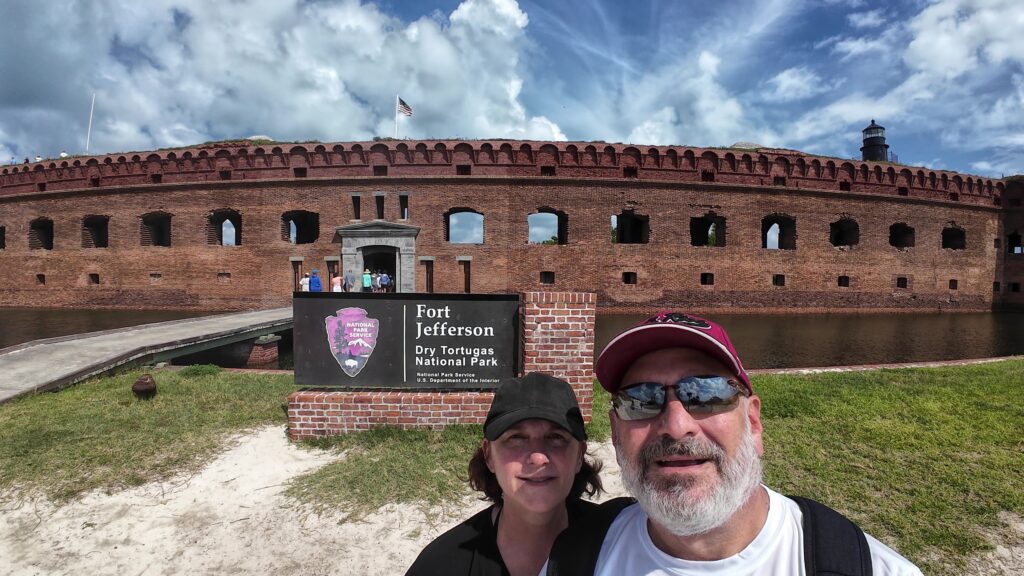
Table of contents
- Introduction
- The Journey to Dry Tortugas
- Yankee Freedom III Facilities and Excursion Package
- Discovering Fort Jefferson
- Lunch and Leisure
- Self-Guided Tour
- Snorkeling Adventures
- Boarding and Heading Back to Key West
- Other Information
- How to Get to Dry Tortugas National Park?
- Where is the Dry Tortugas National Park located?
- Reflections on Our Experience
- Conclusion
The Journey to Dry Tortugas
Our full day tour began early as we gathered at the Key West ferry terminal around 6:30 AM for a 7 AM check-in. After a brief introduction and overview of the trip, we boarded the ferry, Yankee Freedom III, at approximately 7:30 AM. Note that you get a number when you check in so that’s the order in which you board.
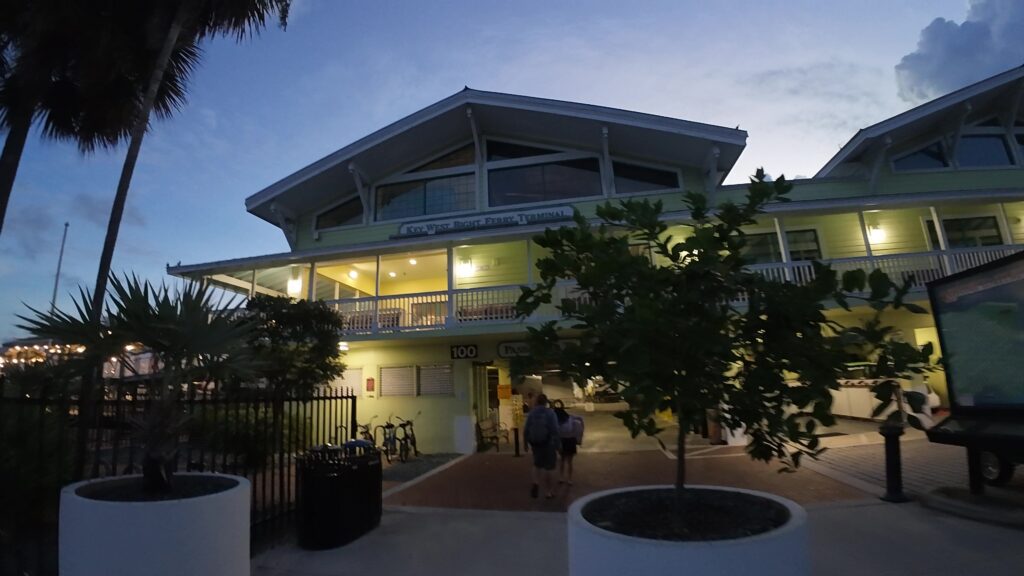
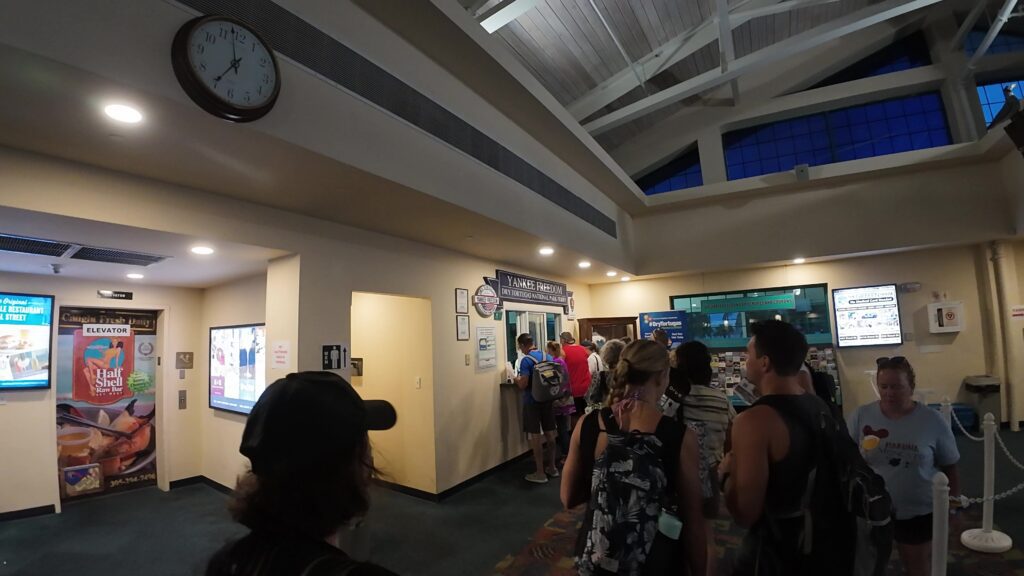
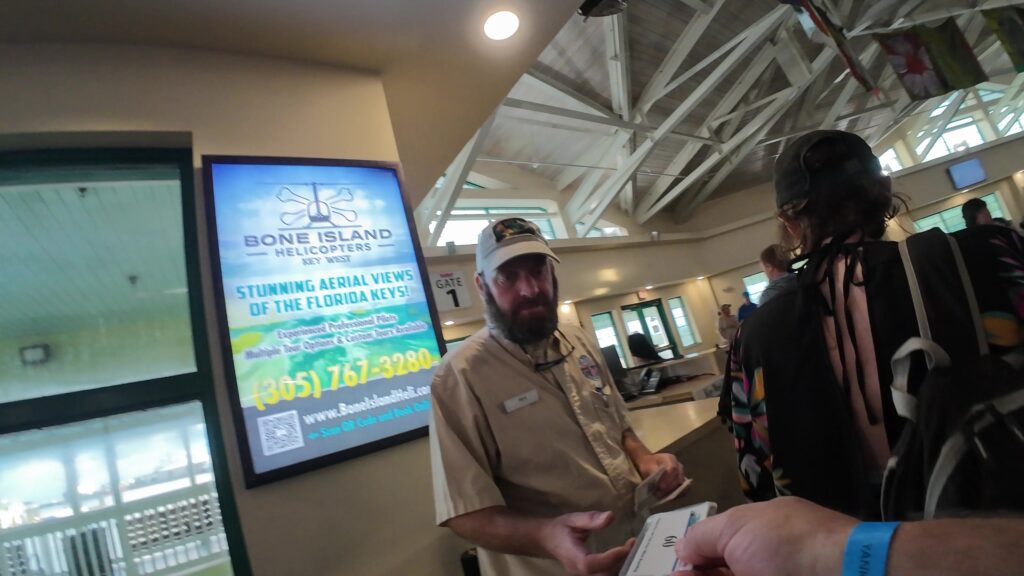
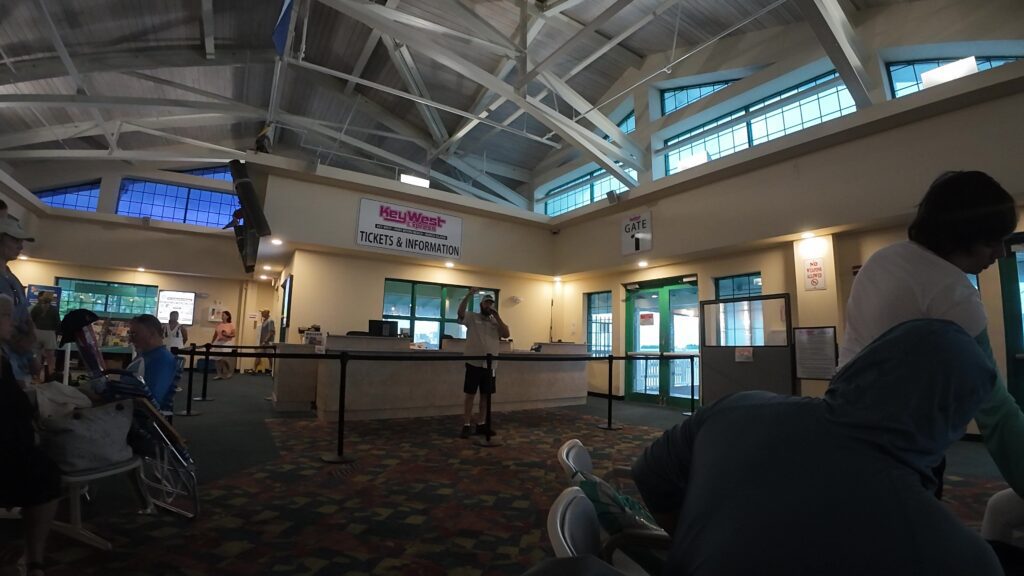
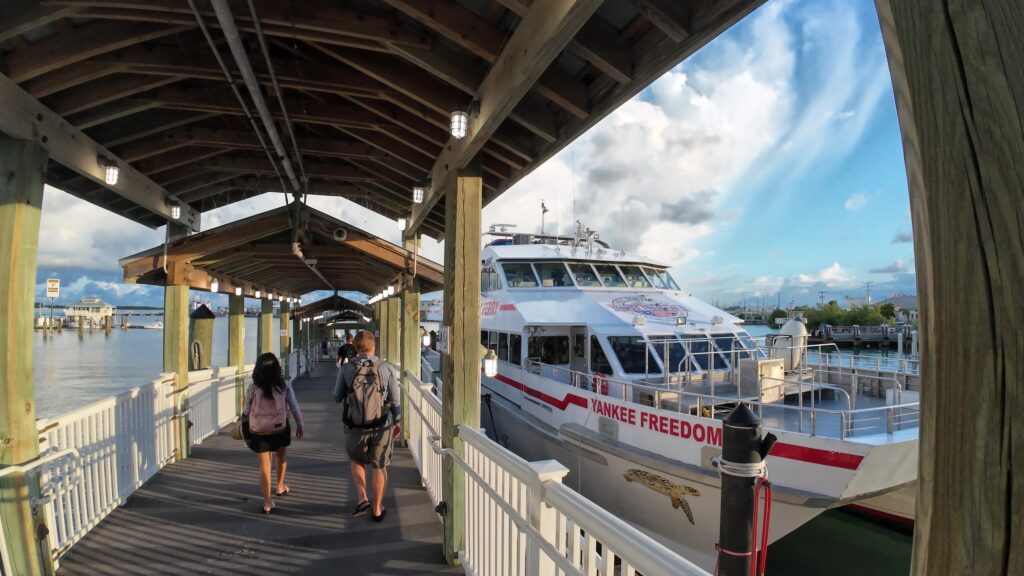
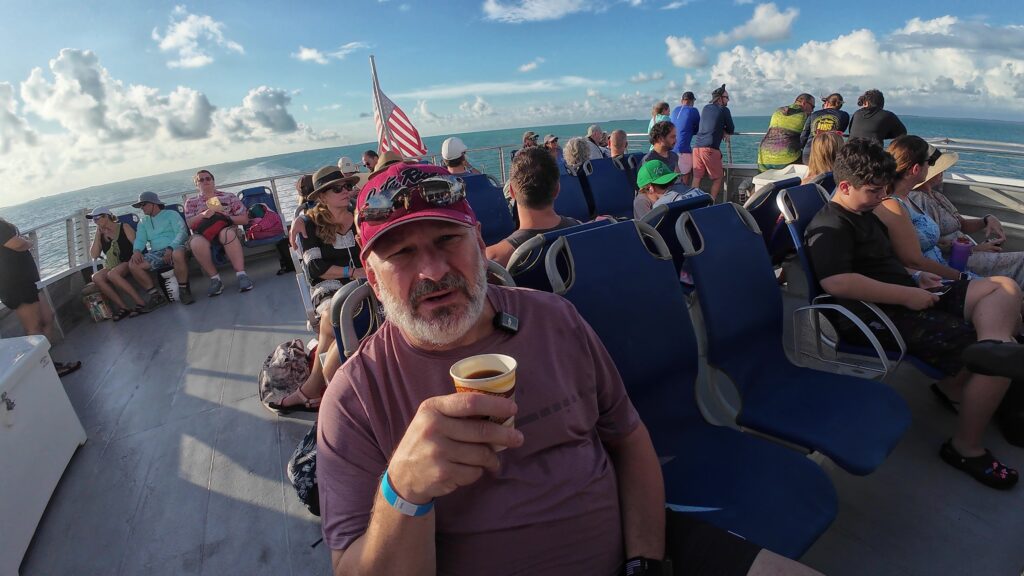
Yankee Freedom III Facilities and Excursion Package
Breakfast
Departing shortly thereafter, we were treated to a delightful breakfast onboard, including coffee, bagels, yogurt, fruit cups, and more—a perfect start to our adventure.
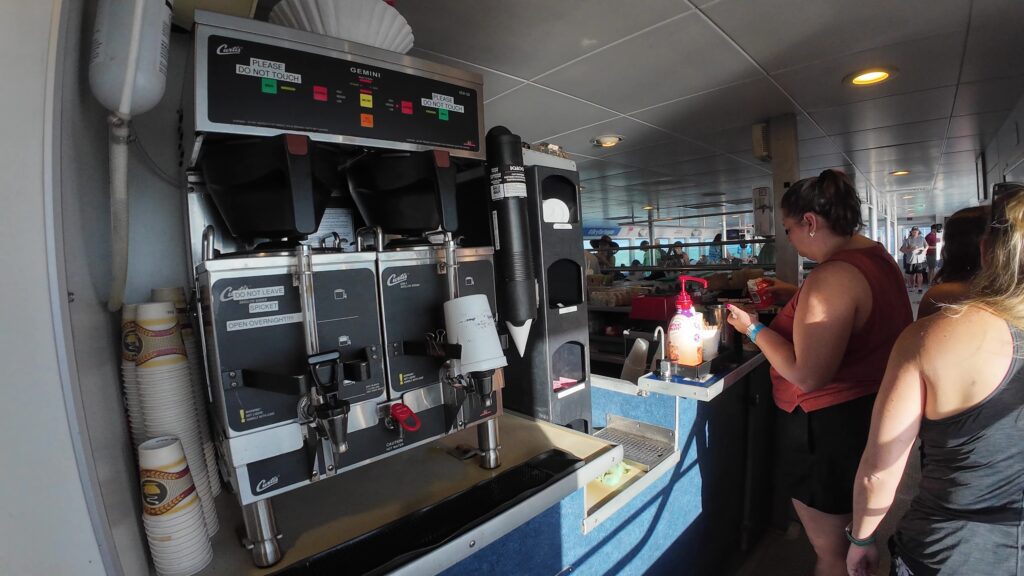
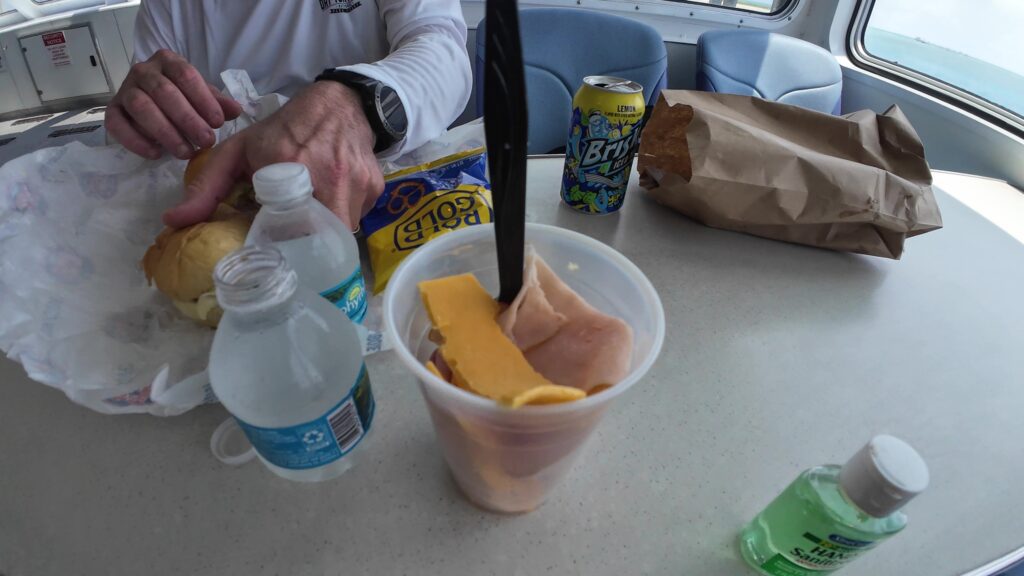
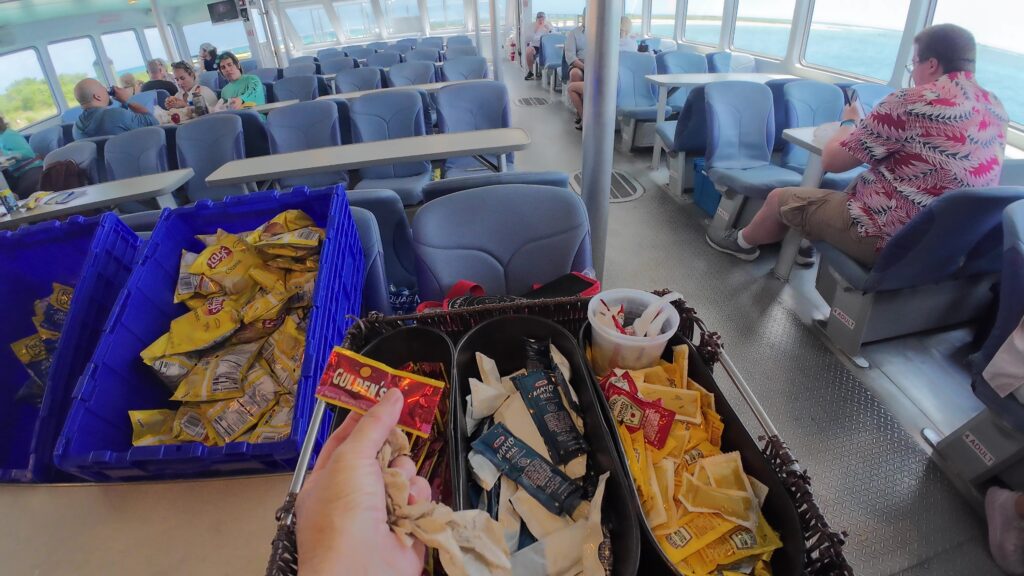
Air-Conditioned Cabins
The Yankee Freedom provided ample space for passengers and featured air conditioning on both levels.
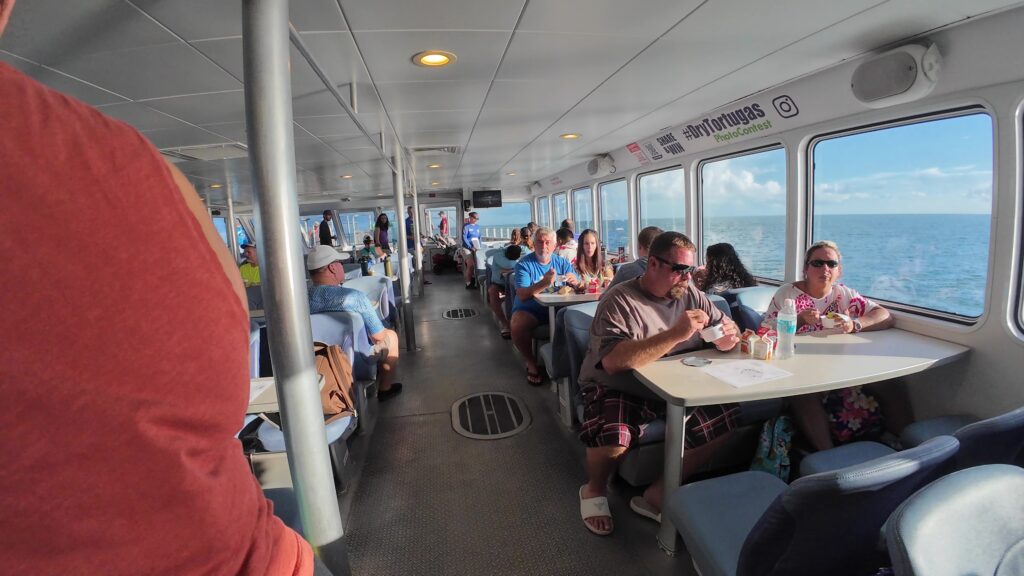
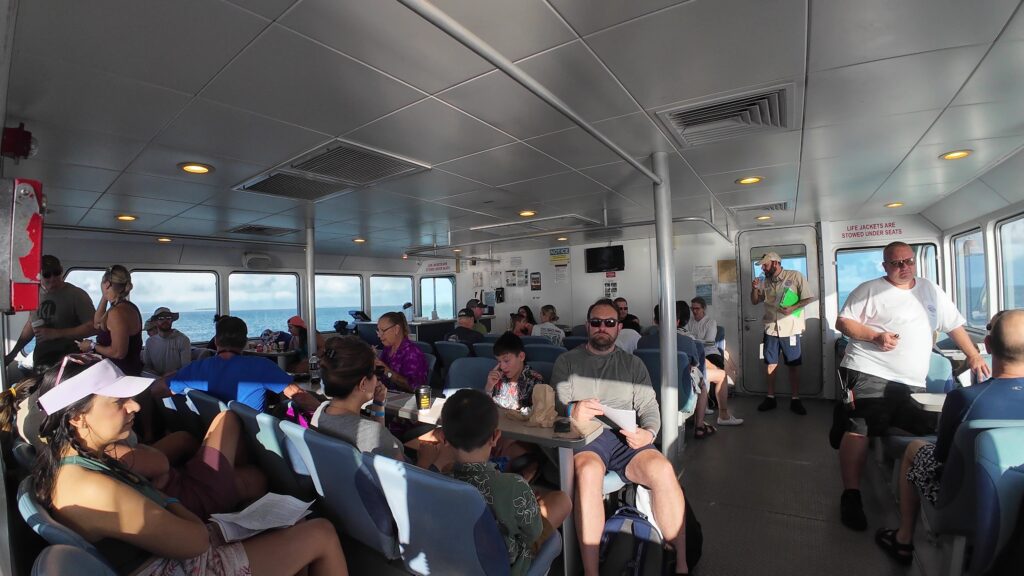
The ferry also boasted clean restrooms, a gift/snack shop, and fresh water showers for post-swim clean-up.
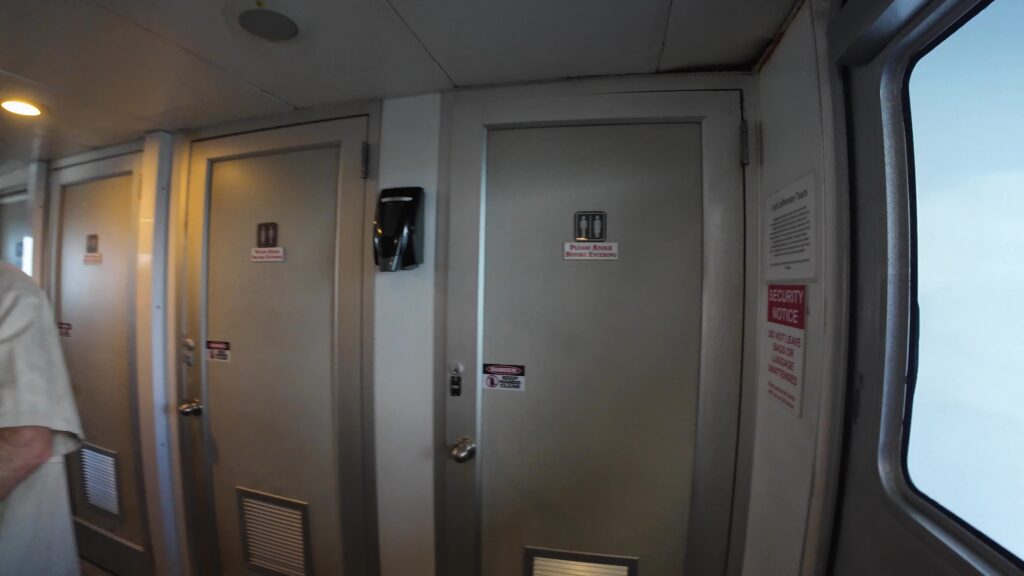
Although we encountered a bit of rain on our journey, it did not detract from the overall experience.
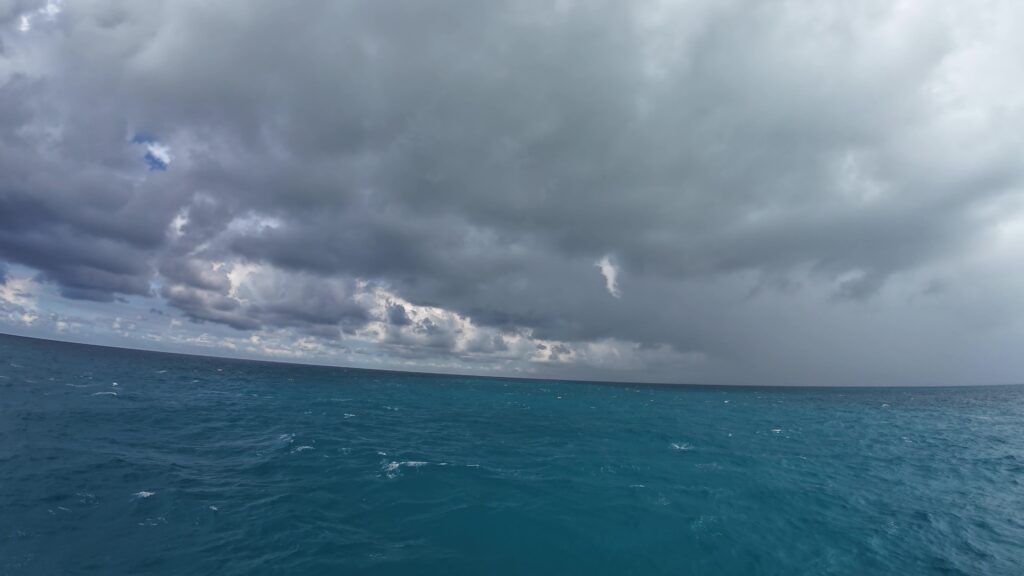
The ride to Dry Tortuga took about two and a half hours, during which we passed several smaller keys, building our excitement as we glimpsed the majestic Fort Jefferson on the horizon.
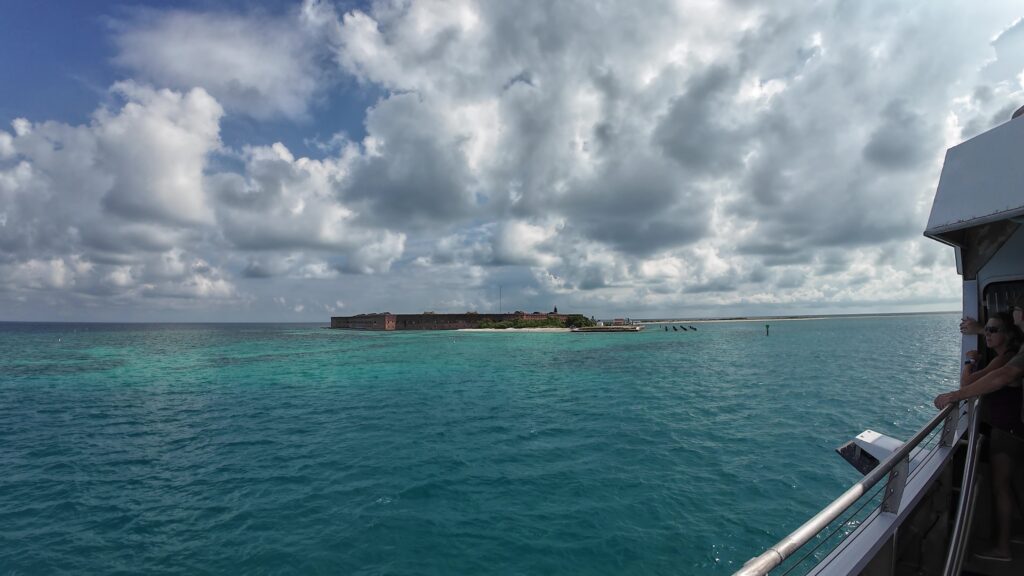
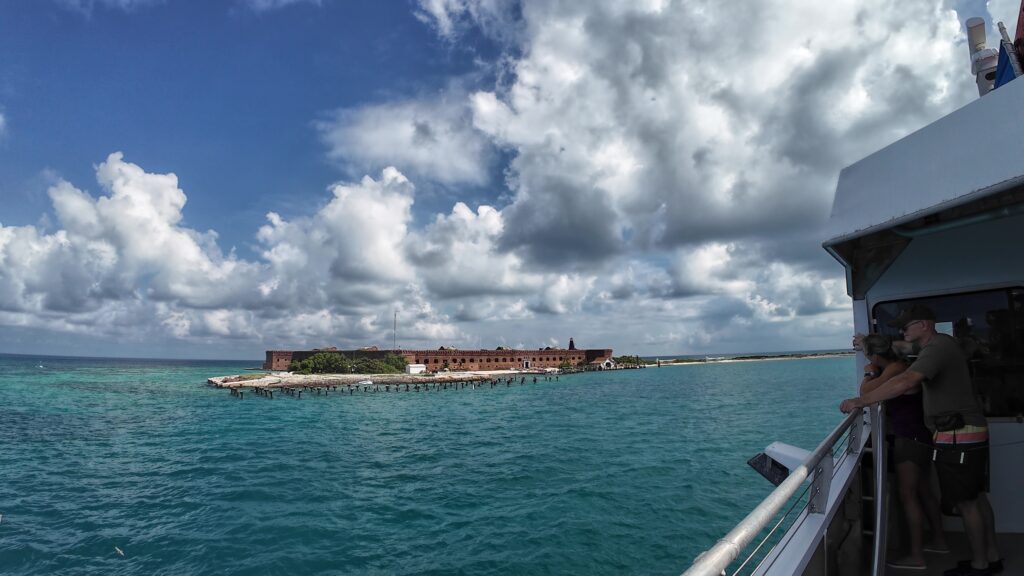
As you approach Dry Tortugas you can recognize shallow waters as you get close but also that it has a reasonably deep water harbor as the Yankee Freedom navigates to the dock.
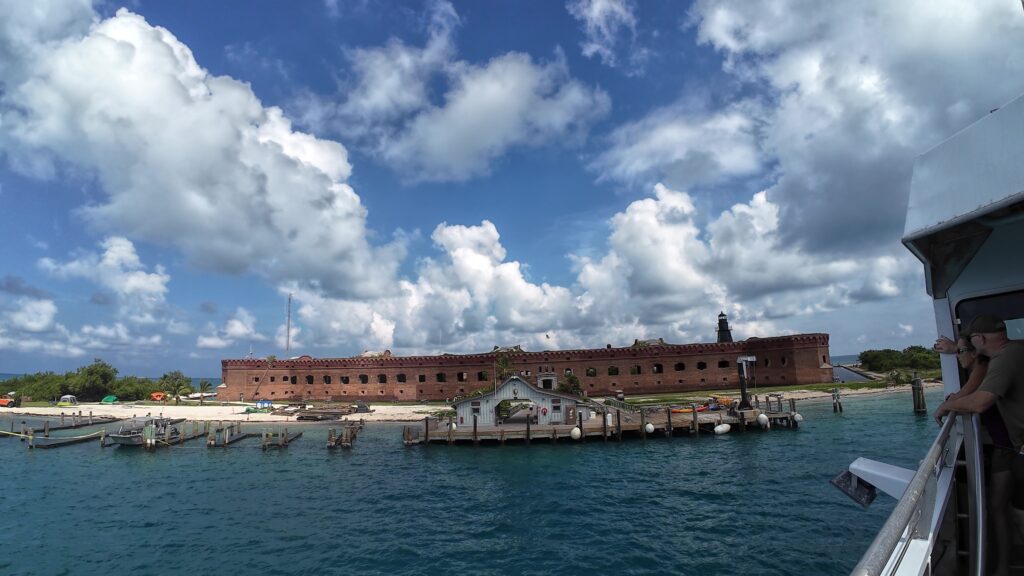
We then left the ferry to go check out Dry Tortugas.
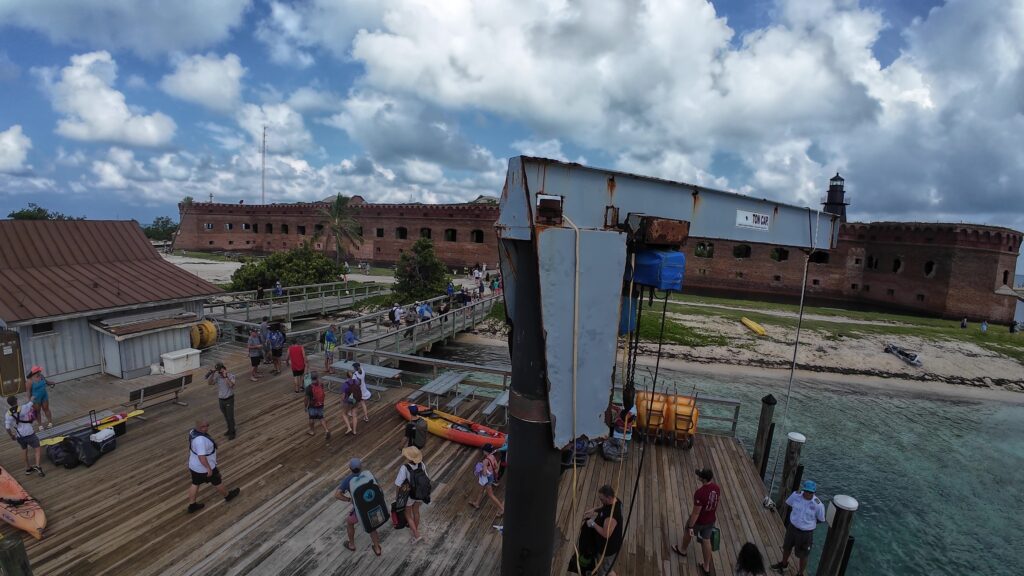
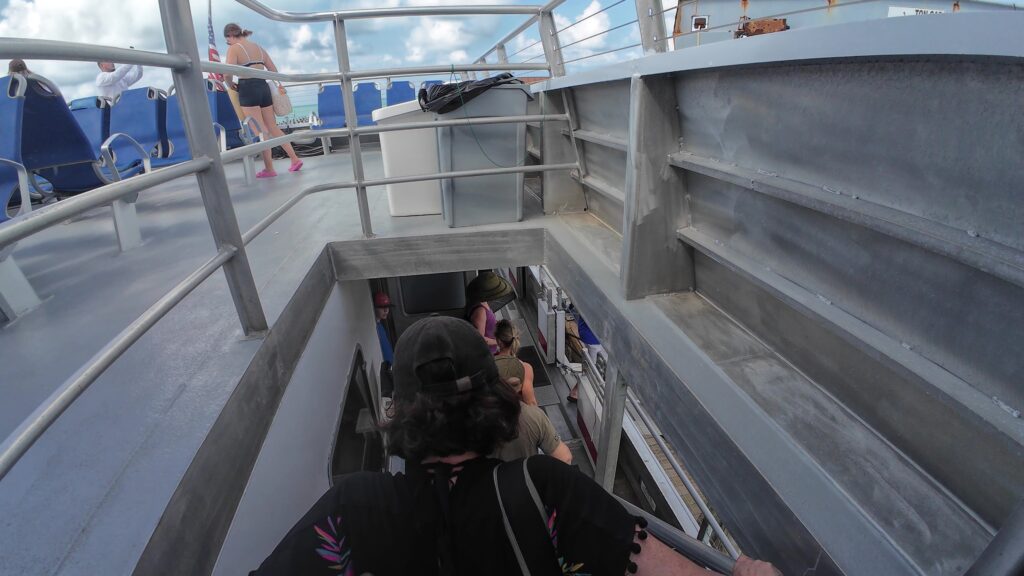
Discovering Fort Jefferson
Upon arriving at Dry Tortuga around 10:30 AM, we participated in a guided tour of Fort Jefferson at 11 AM. Our tour lasted approximately 45 minutes and provided fascinating insights into historic Fort Jefferson’s history. We also made our own self-guided tour of the fort to make sure we looked at areas we didn’t get to during the guided tour.
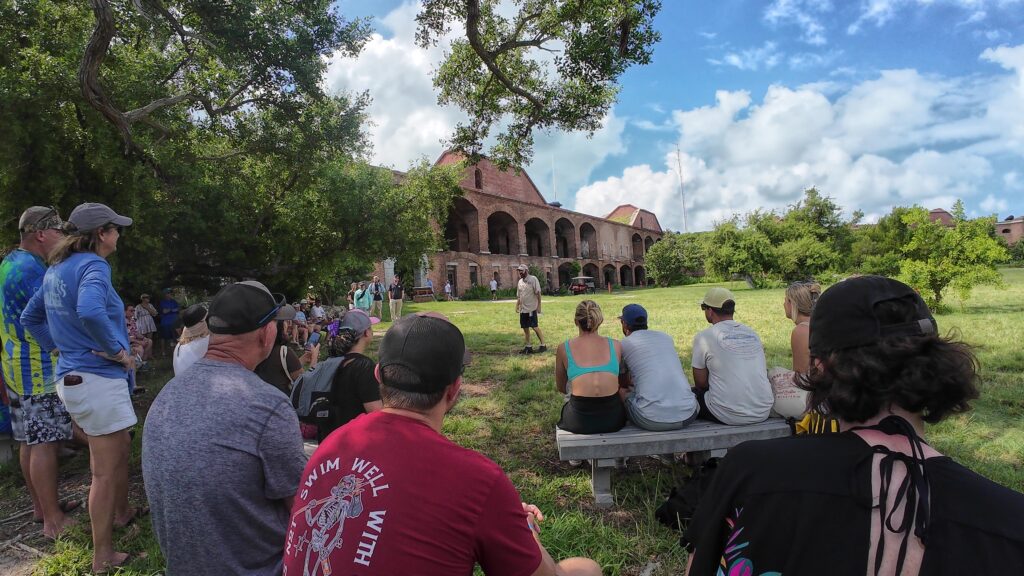
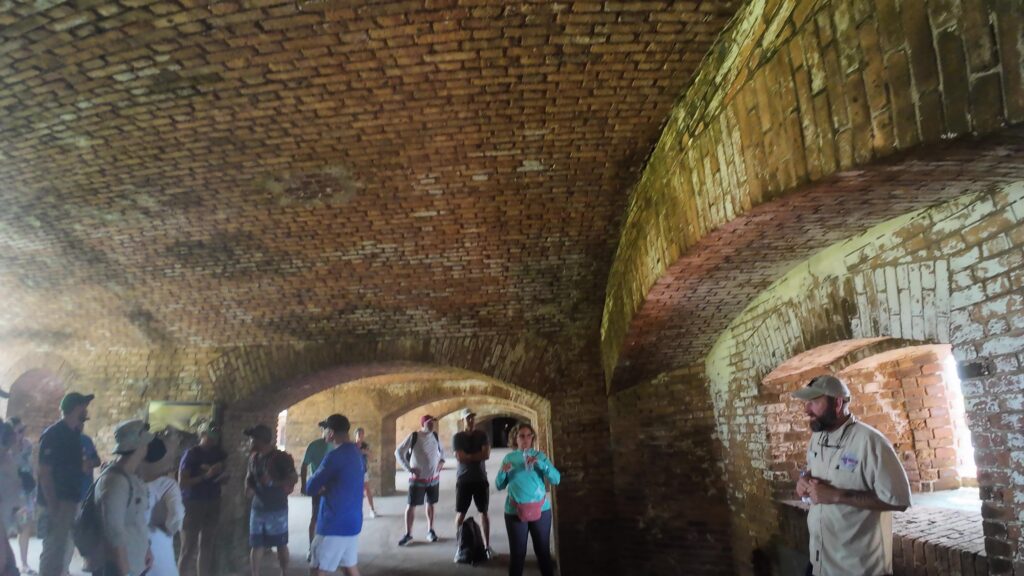
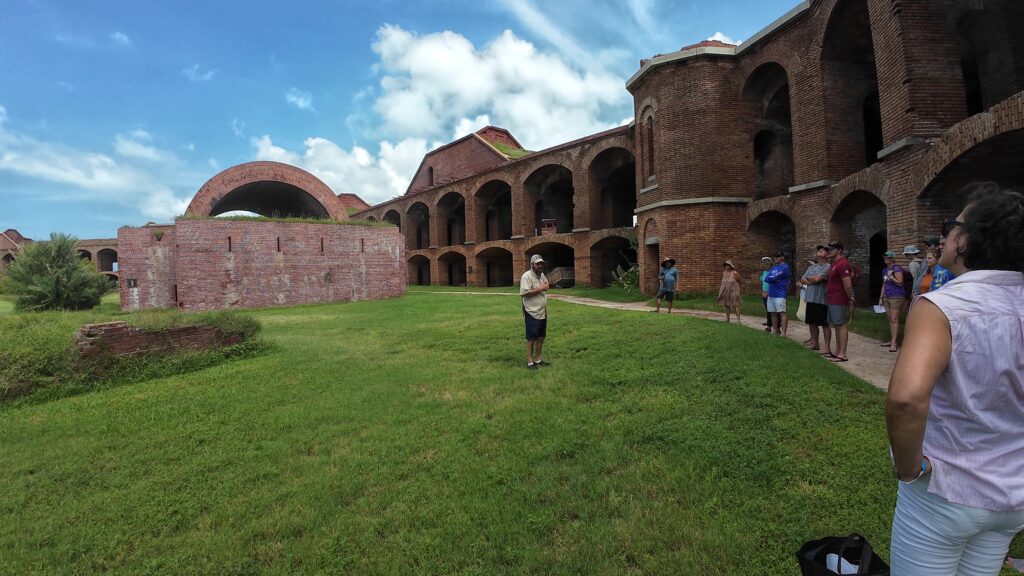
Construction Challenges
Built starting in 1846, The United States designed Fort Jefferson as a strategic military installation but faced numerous construction challenges.
Sinking Fort
First, the fort was built on the Garden Key’s coral base. Remarkably, the builders had to dig deep into the wet, sandy ground to establish a solid foundation, utilizing concrete and a staggering 16 million bricks in the process. They were required to pour footings five feet below low tide, yet the fort has been slowly sinking from its own weight since originally constructed.
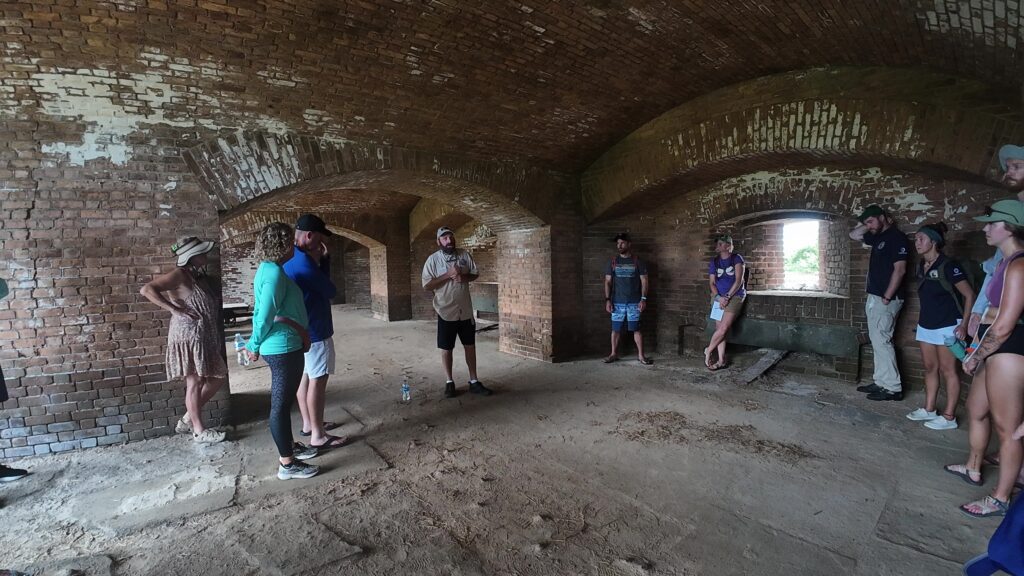
Cisterns
The fort was built to store a whole lot of water – 1.5 million gallons to be exact! There were 110 cisterns in total, with 109 of them built under the first tier casemates. That’s a whole bunch of water ready to be used if needed! However, the fort’s weight issue causing it to sink continued to crack the cistern walls allowing saltwater intrusion making them useless. Three huge cisterns were eventually built in the parade grounds and are still in use today.
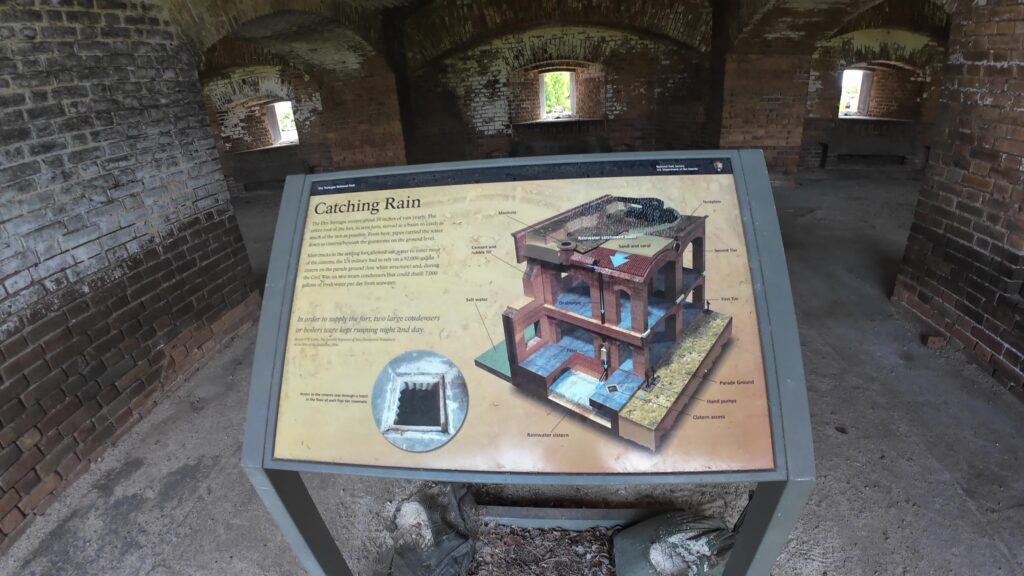
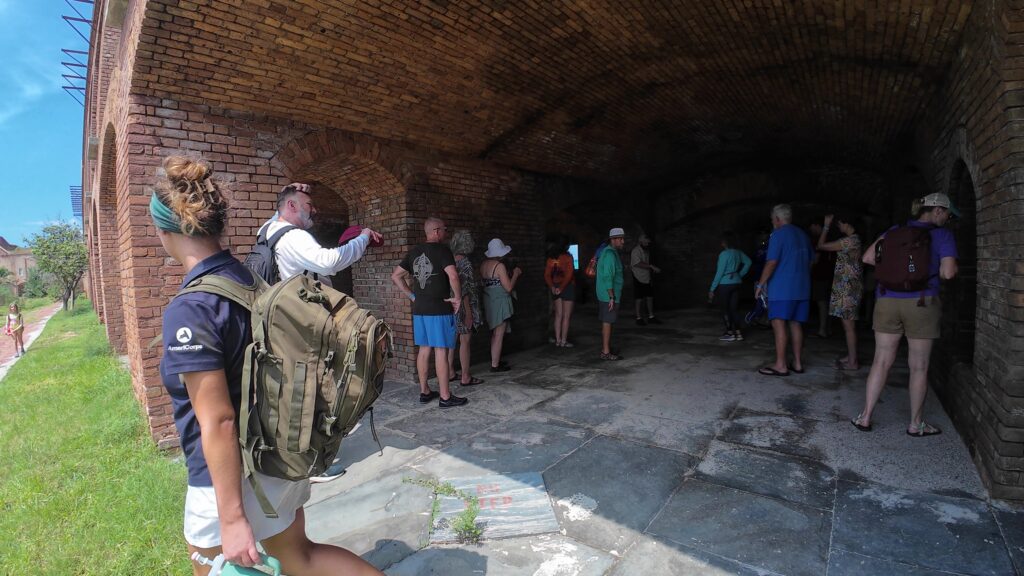
Materials
All materials had to be brought by ship to Garden Key. Unfortunately, the changing budget over the years affected what material was available to be shipped here. Routinely they had to work of many projects at once as not all materials for one project or another would arrive together. For example, many of the buildings being built in the parade grounds were left unfinished as the material never did arrive.
The fort itself was constructed with features such as bastions, which provided multiple levels of defense and storage areas for ammunition.
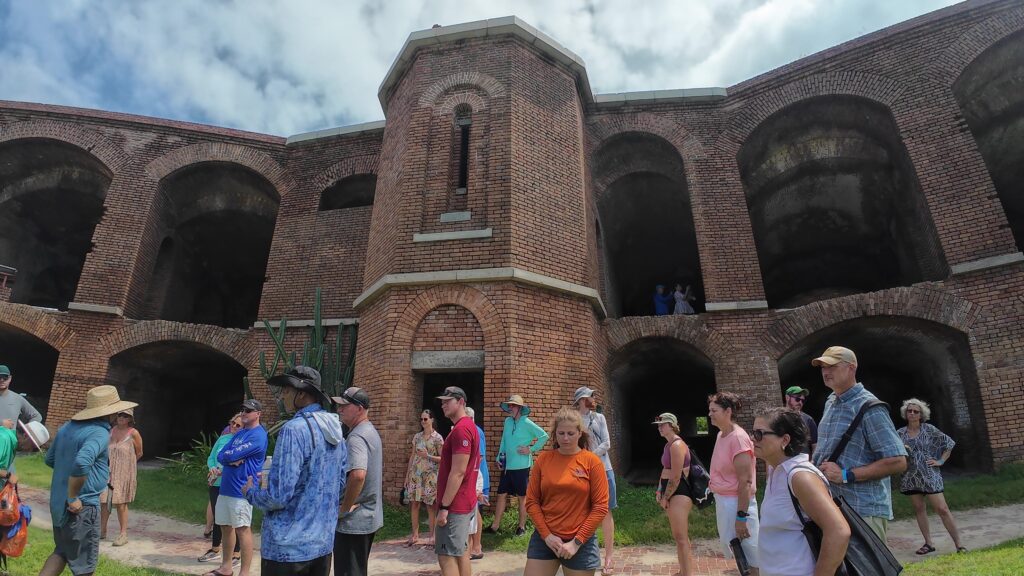
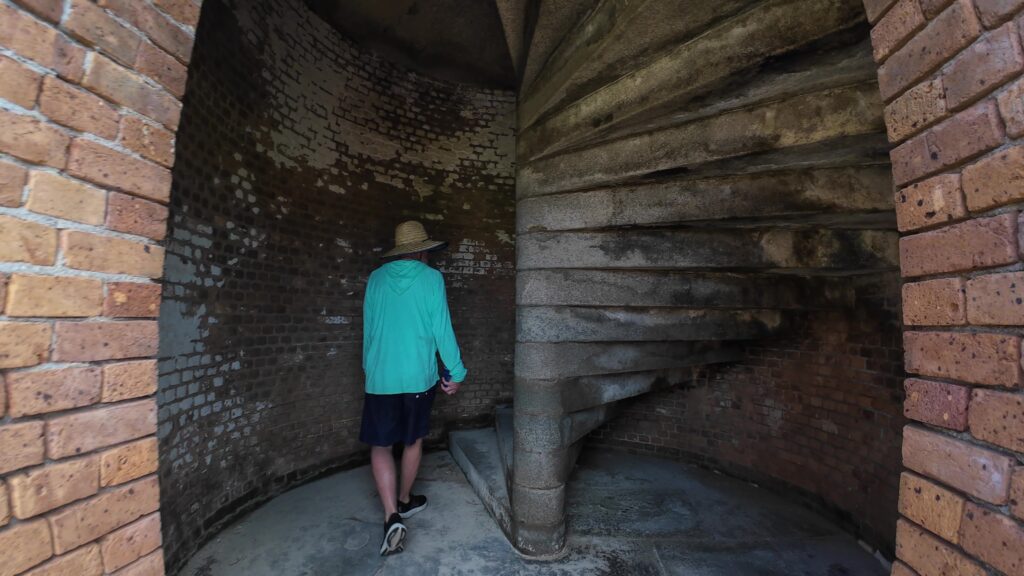
The Name: “Dry Tortugas”
An interesting tidbit: the fort’s name, “Dry Tortugas,” was inspired by Ponce de Leon, who discovered the island in 1513 and noted the abundance of sea turtles—”Las Tortugas” in Spanish.
Fort Jefferson actually sits on a coral island named Garden Key. In addition to Garden Key, the coral islands that make up Dry Tortugas National Park include Loggerhead, Bush, Long, Hospital, Middle, and East keys.
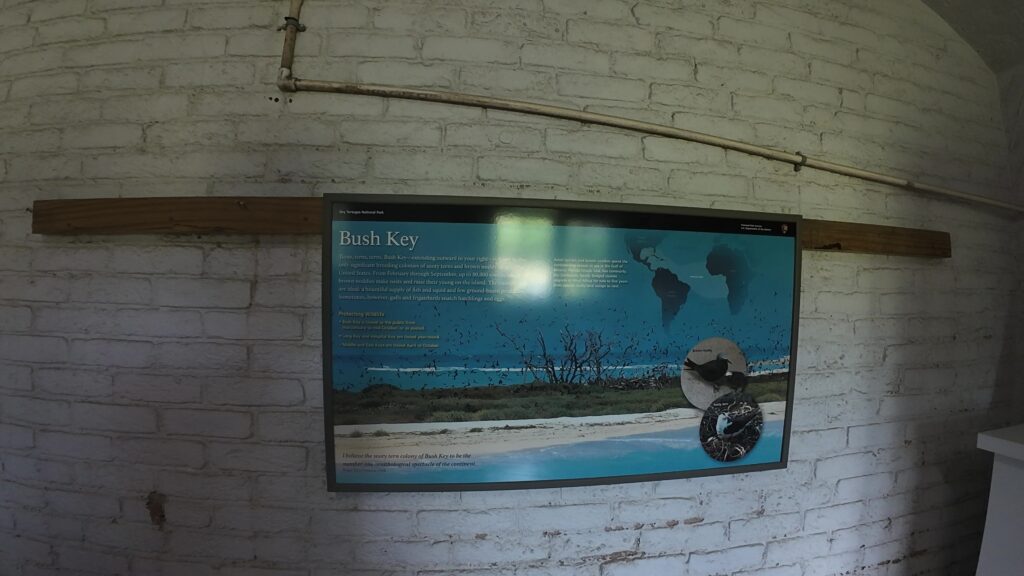
Massive Fort Jefferson
Fort Jefferson is considered the largest 19th century fort in the United States, located in the Dry Tortugas National Park off the coast of Florida; it is also recognized as the biggest all-masonry fort in the country.
The original plan for Fort Jefferson was to built quarters to house 7,500 men. It was also designed to have 450 guns. Unfortunately, construction was never completed. The stronghold was left behind in 1874 after the introduction of rifled artillery during the Civil War weakened its defensive capabilities.
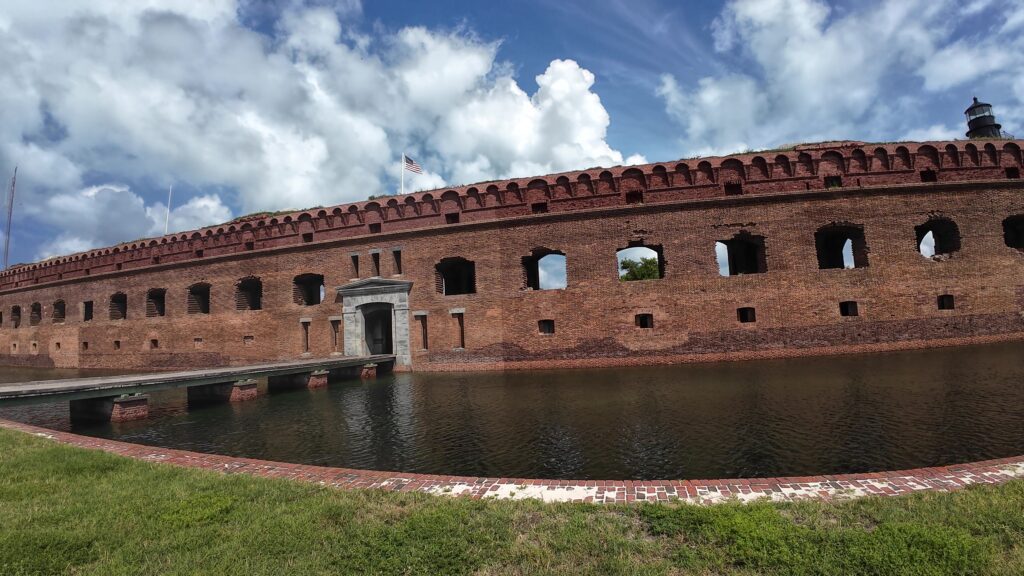
Cannon-Ball Furnace
The Cannon-Ball Furnace, seen below, is a historic artifact used to heat cannon balls to make them more effective during combat. This process allowed the cannon balls to cause maximum damage upon impact, making them more deadly weapons. In fact, the cannoneers would fire these red-hot cannon-balls with the intent to skip the cannon-ball on the water to enter the ship at the waterline for maximum damage. The Cannon-Ball Furnace serves as an important historical site within Dry Tortugas National Park, providing insight into the technological advancements of warfare in the 1800s.
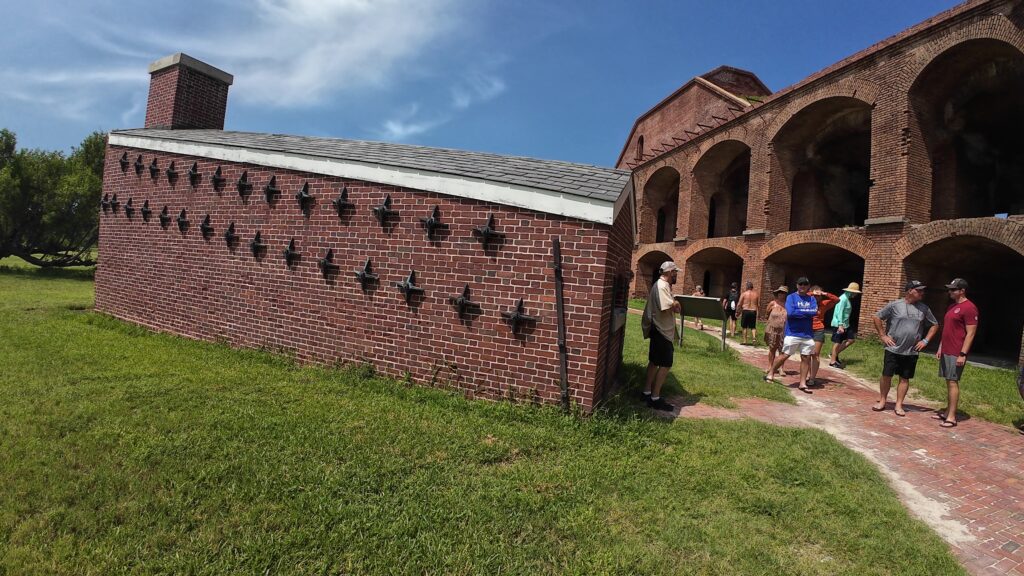
The Lighthouse
The Lighthouse at Dry Tortugas National Park stands as a historic beacon of maritime safety and a symbol of the rich nautical heritage in the Gulf of Mexico.
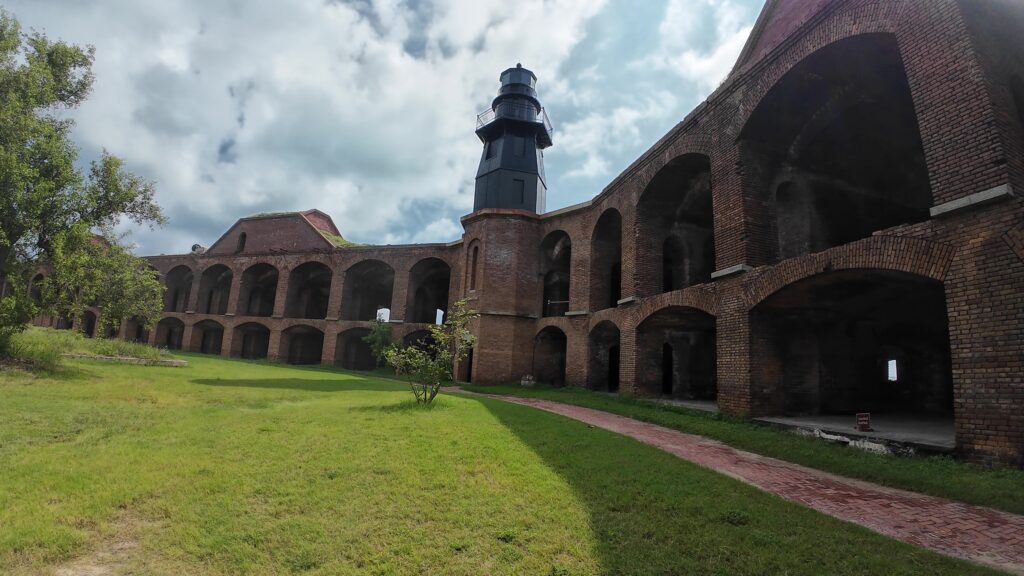
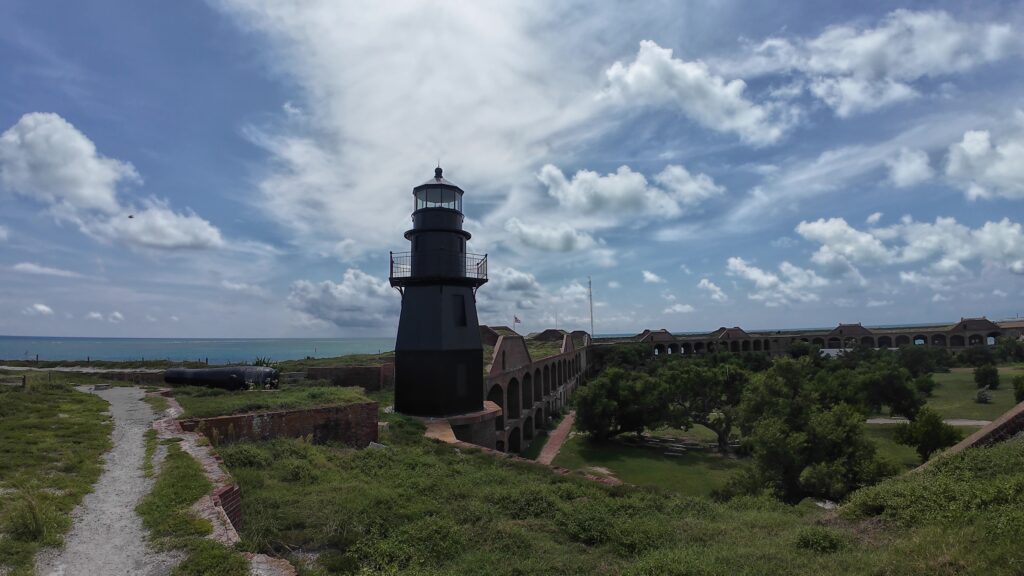
A Famous Prisoner
Fort Jefferson was used at times as a military prison. A famous prisoner from the Civil War era was Dr. Samuel Mudd. John Wilkes Booth assassinated Abraham Lincoln back on April 14th,1865. As Booth was attempting to escape, he ended up breaking his leg. Dr. Samuel Mudd treated Booth and allowed him to stay at his home. Mudd was convicted of conspiracy to murder the president and sentenced to life in prison at Fort Jefferson in the Dry Tortugas but was later pardoned in 1869, in part because of his efforts to stop the spread of yellow fever at the prison.
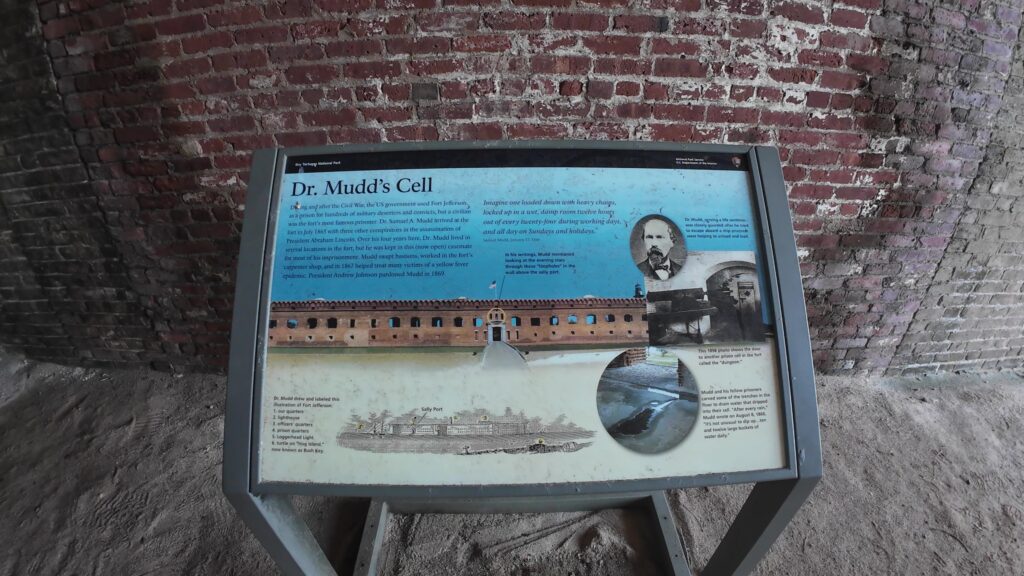
Lunch and Leisure
After our enlightening guided tour, we returned to the ferry for lunch at 11:30 AM, as Lunch was available on the ferry from 11 AM to 1 PM. The lunch options far surpassed expectations, offering a variety of sandwiches, meats, and vegetarian choices, along with accommodations for dietary restrictions. We indulged in a ham sandwich and a delicious meat and cheese plate.
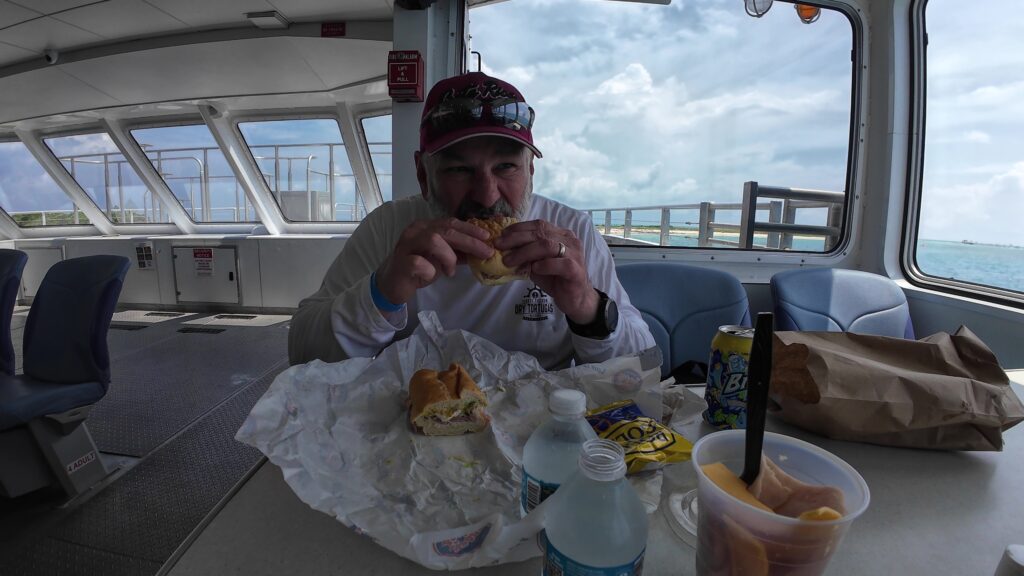


Self-Guided Tour
Once lunch was over, we ventured out on a self-guided tour, exploring many areas of the fort that we had not covered in the guided session. The views from the second and top levels were nothing short of spectacular, allowing us to appreciate the breathtaking scenery surrounding Dry Tortuga.
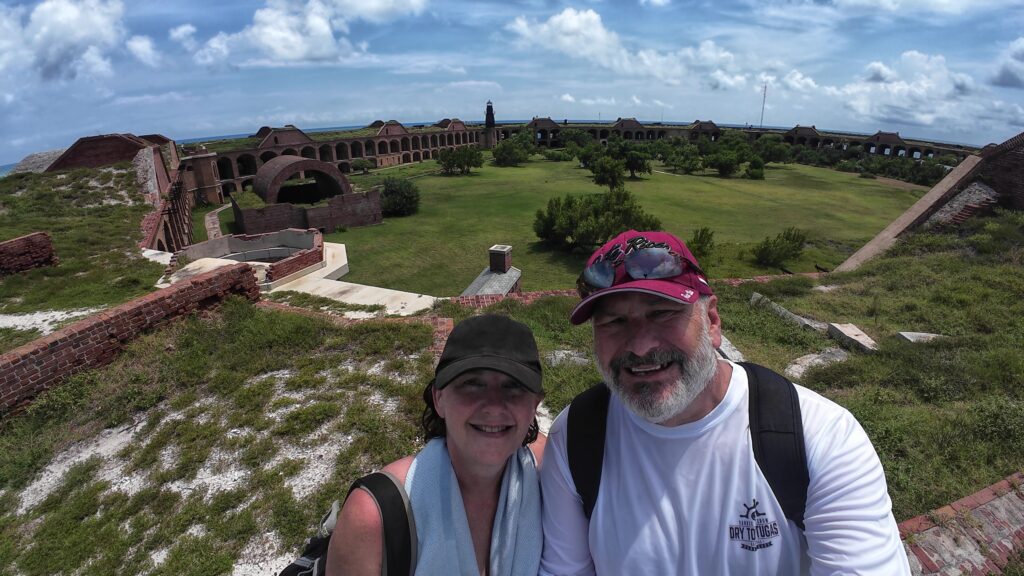
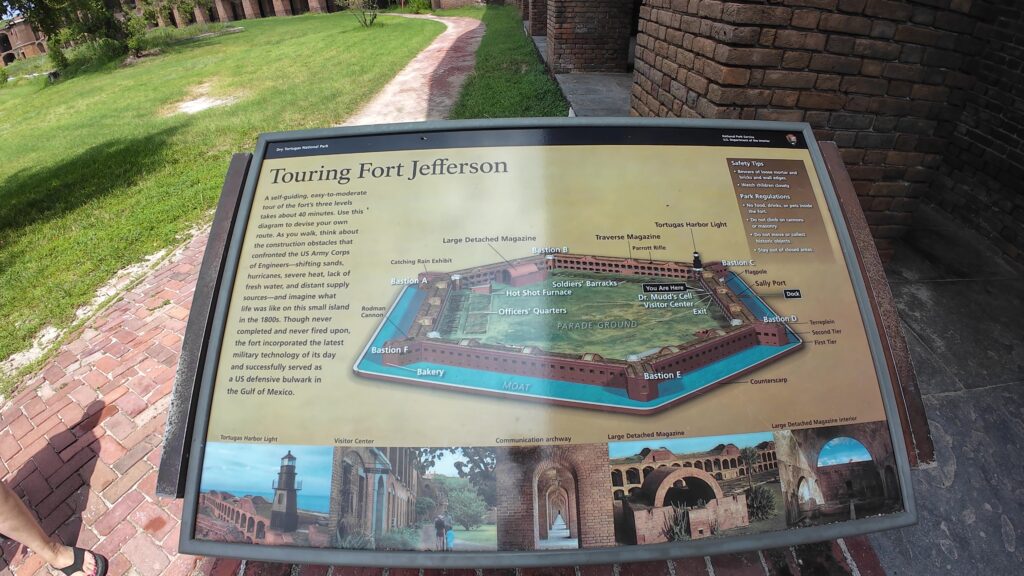
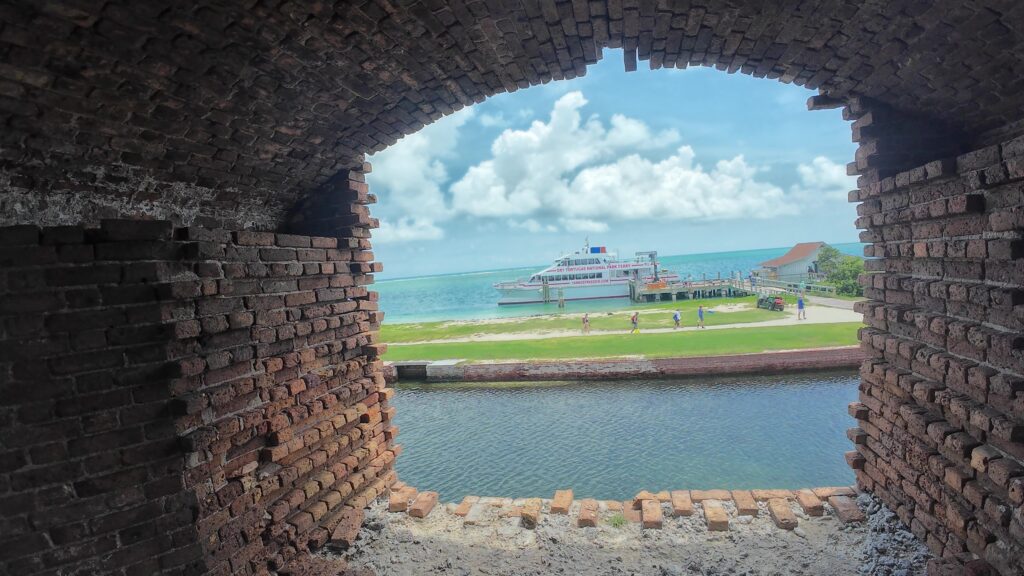
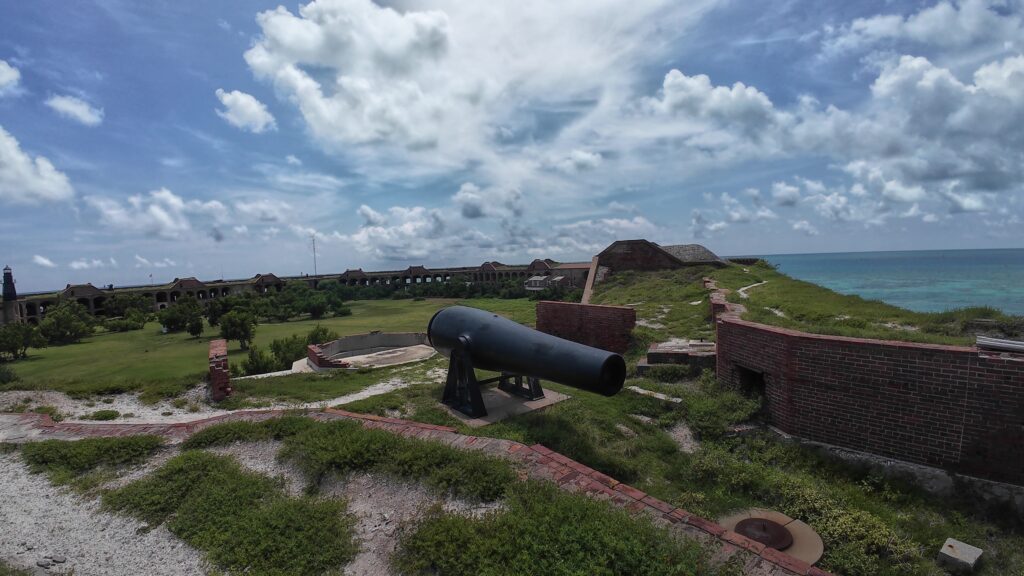
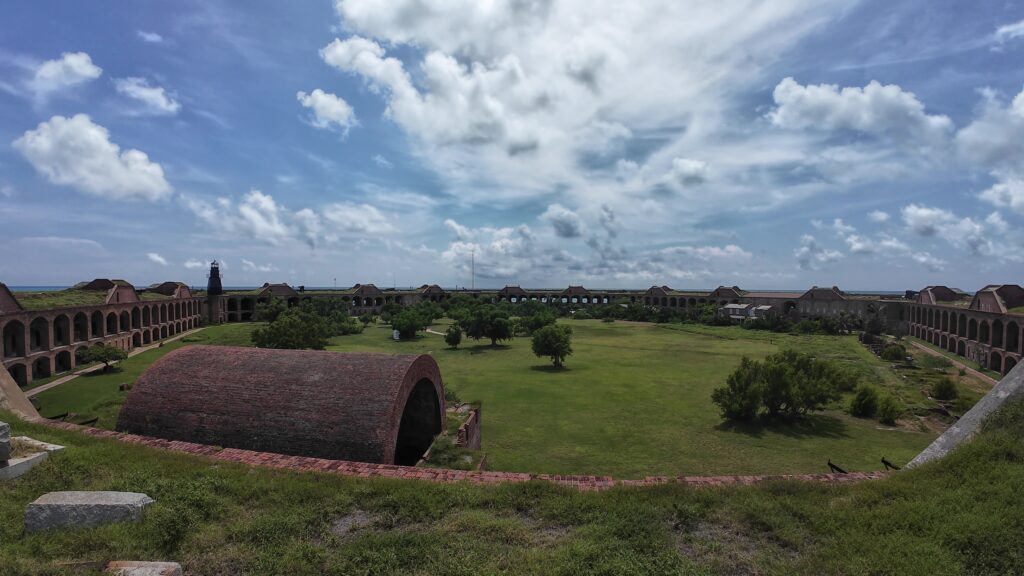
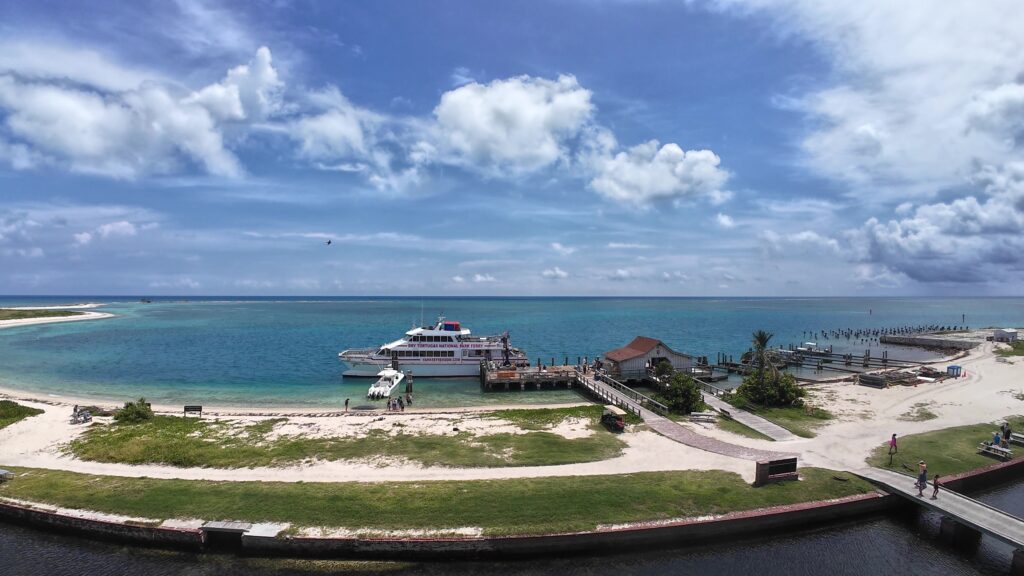
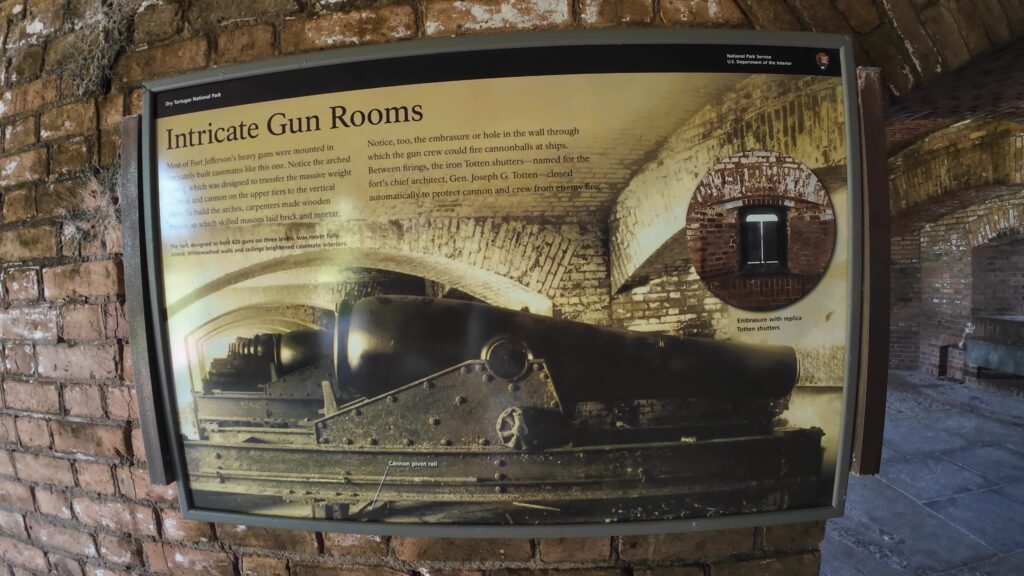
Moats
The design for the fort brought the latest in innovations. One included the use of a moat surrounding the entire fort. When snorkeling we actually went alongside the moat wall near the beach area.
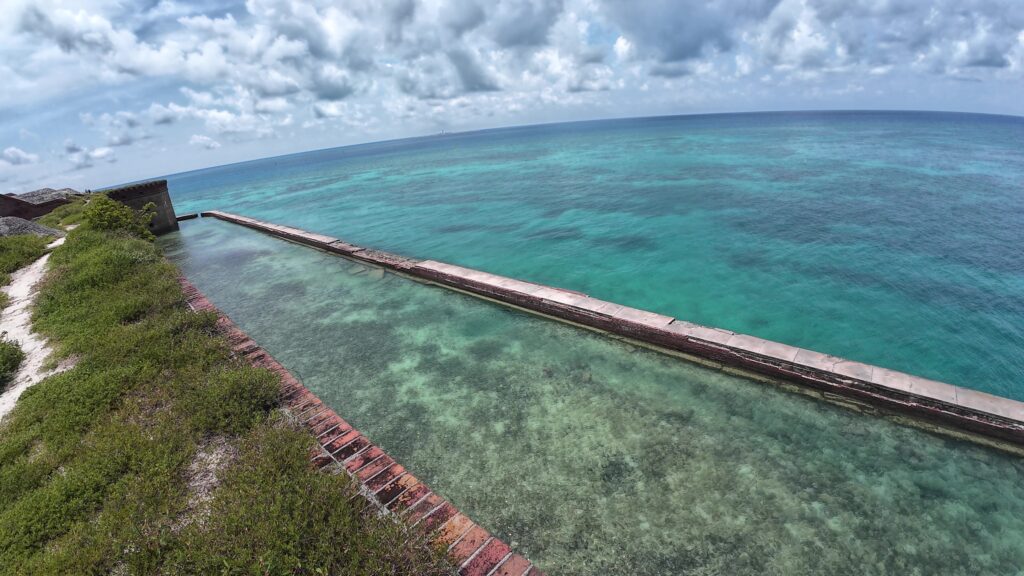
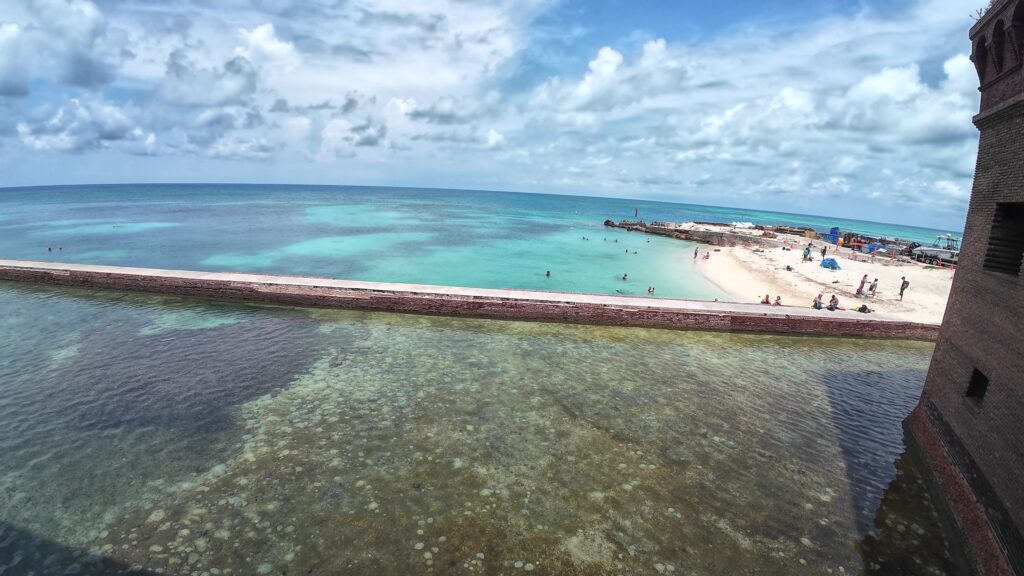
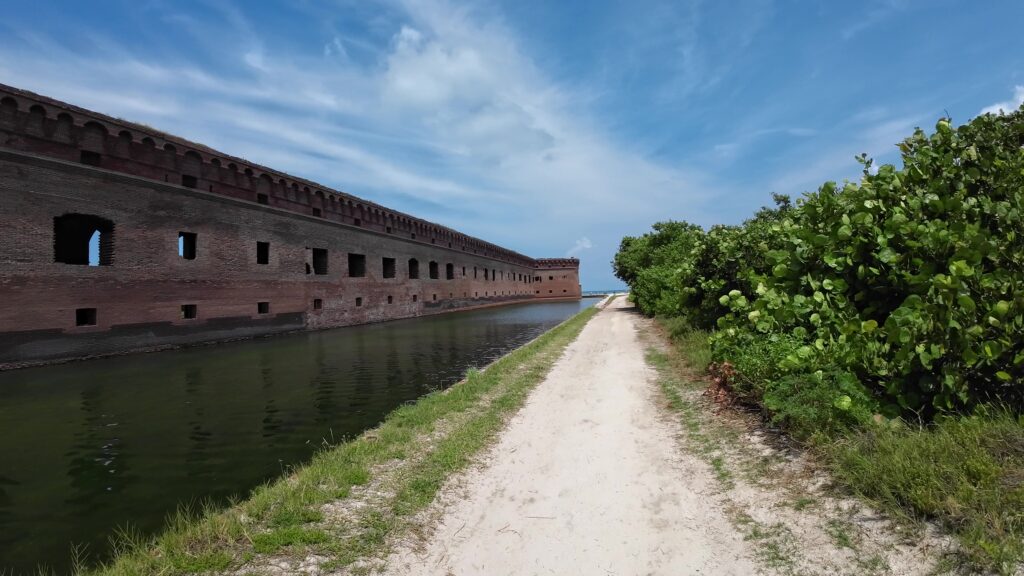
Snorkeling Adventures
After our explorations, we eagerly set out to snorkel in the crystal-clear waters nearby. Armed with our gear, we jumped into the vibrant underwater world, where we encountered schools of colorful fish, including parrotfish. The north side of the island proved particularly fruitful for snorkeling, as we followed the guidance of the flags indicating water conditions. There are the white sand beaches of Dry Tortugas and the moat wall to snorkel. Note that the snorkel gear does come with the ferry boat excursion.
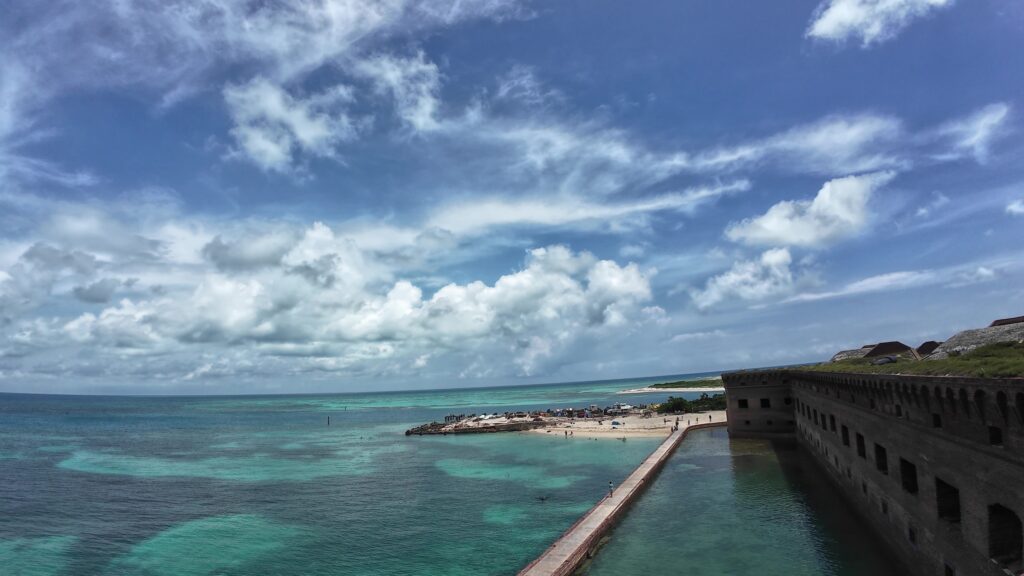
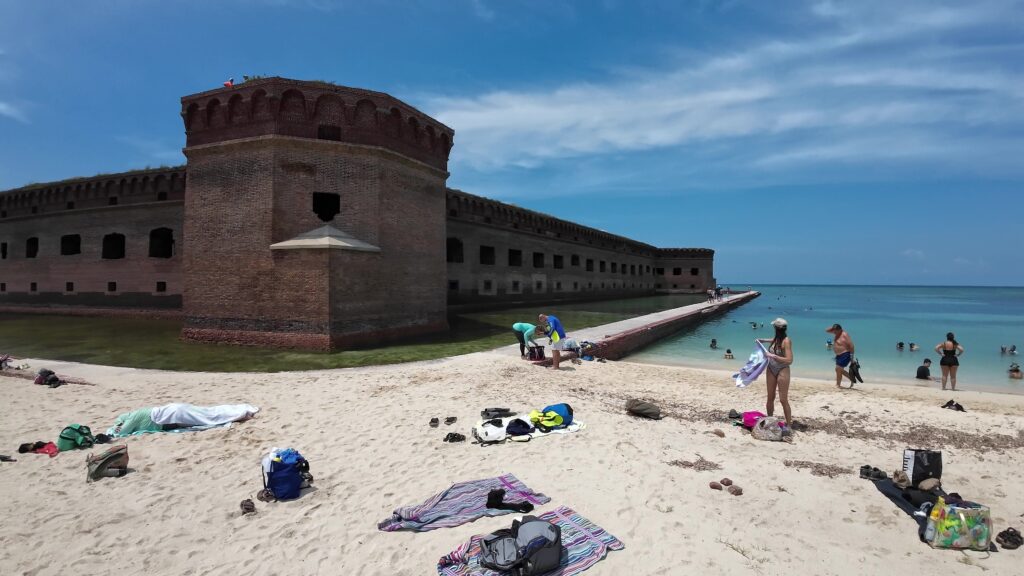
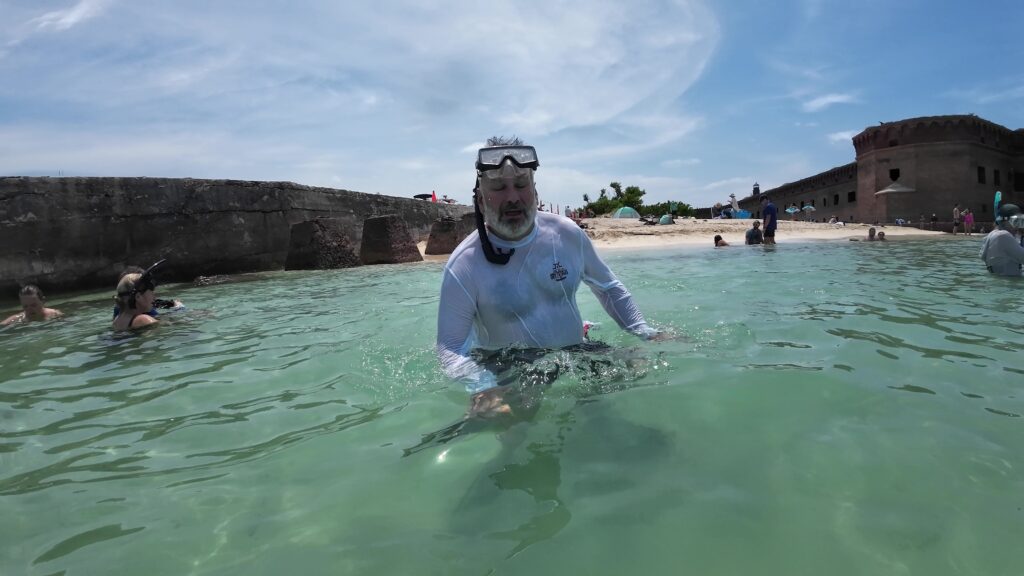
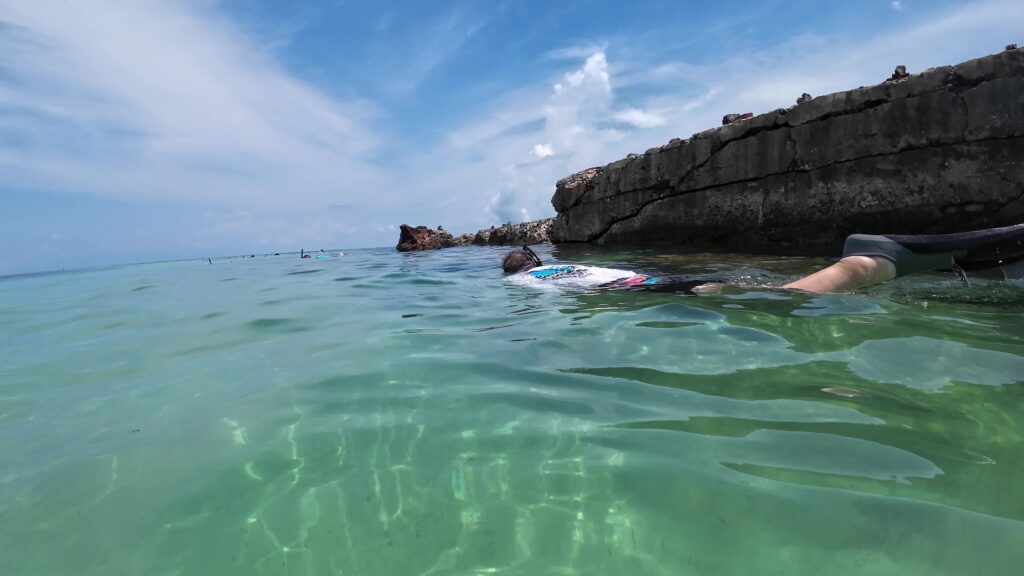
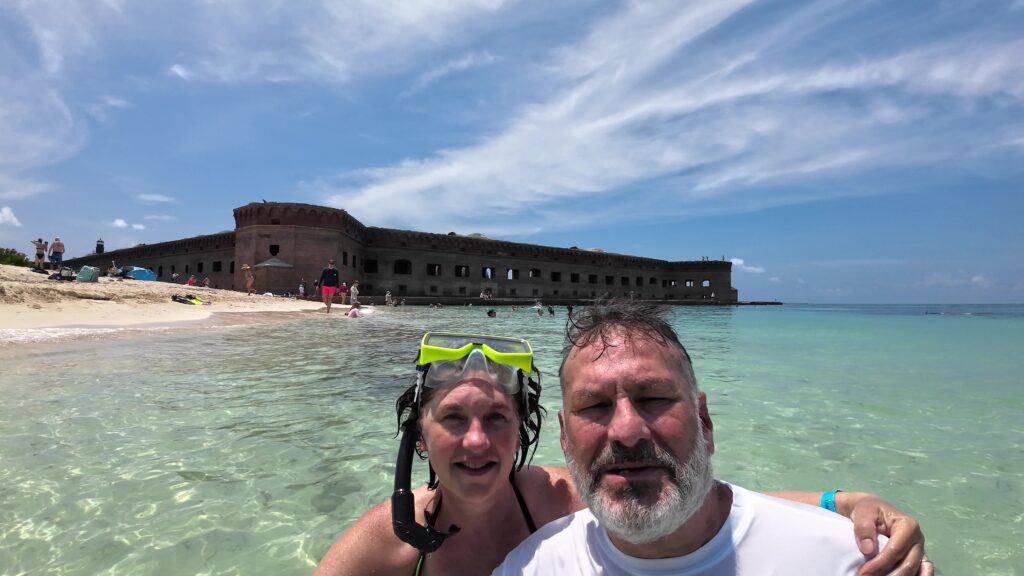
The underwater landscape was teeming with tropical fish and other marine life, and we were thrilled by the diversity we encountered. This was some of the best snorkeling we have experienced.
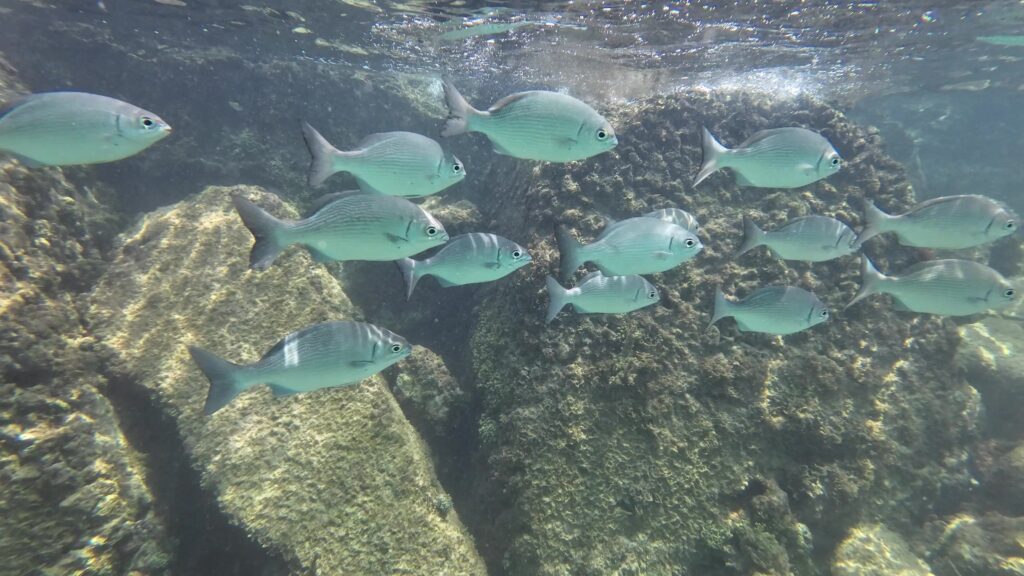
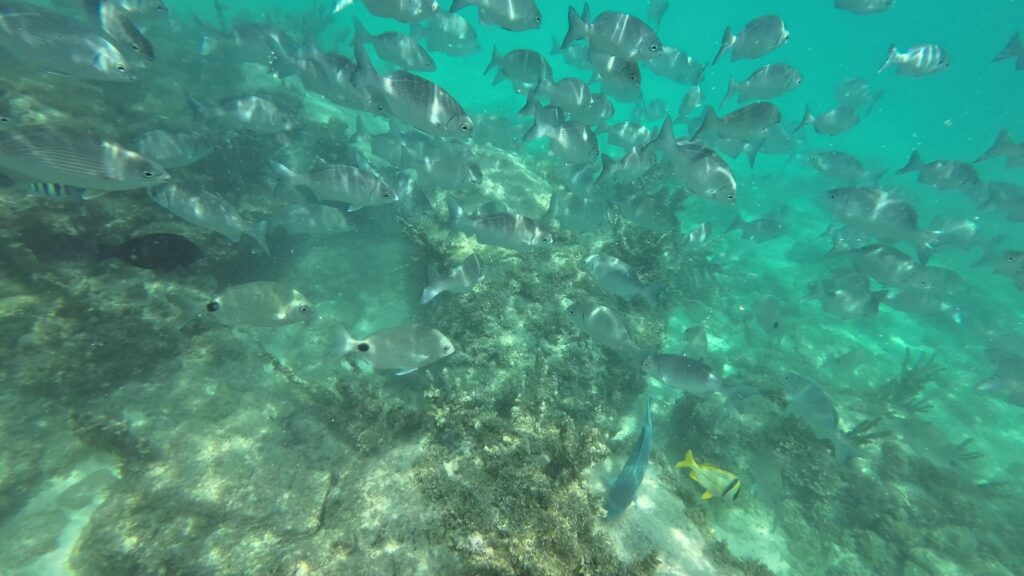
Boarding and Heading Back to Key West
At 4:00 PM, we were all back on the boat and ready to take the ferry ride back to Key West. The return trip was uneventful and our boat ride took about 2.5 hours as well.
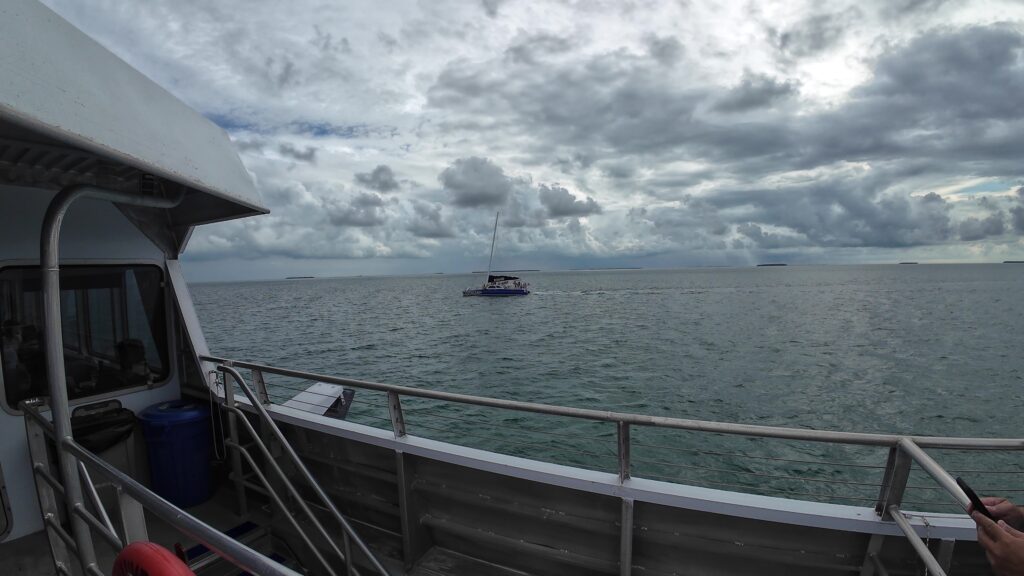
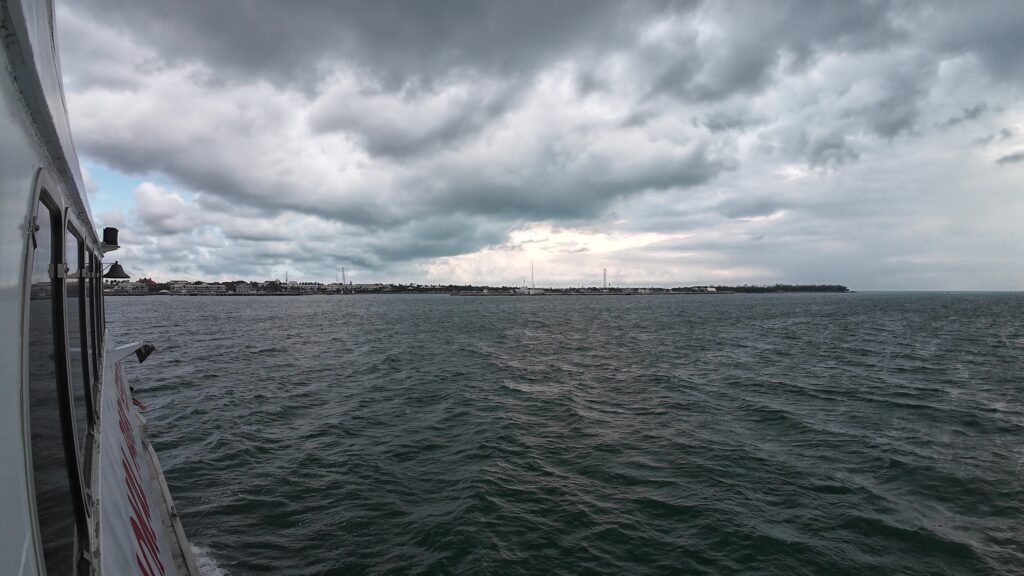
Note that the Yankee Freedom does have fresh water showers for anyone wanting to wash the salt water on the way back.
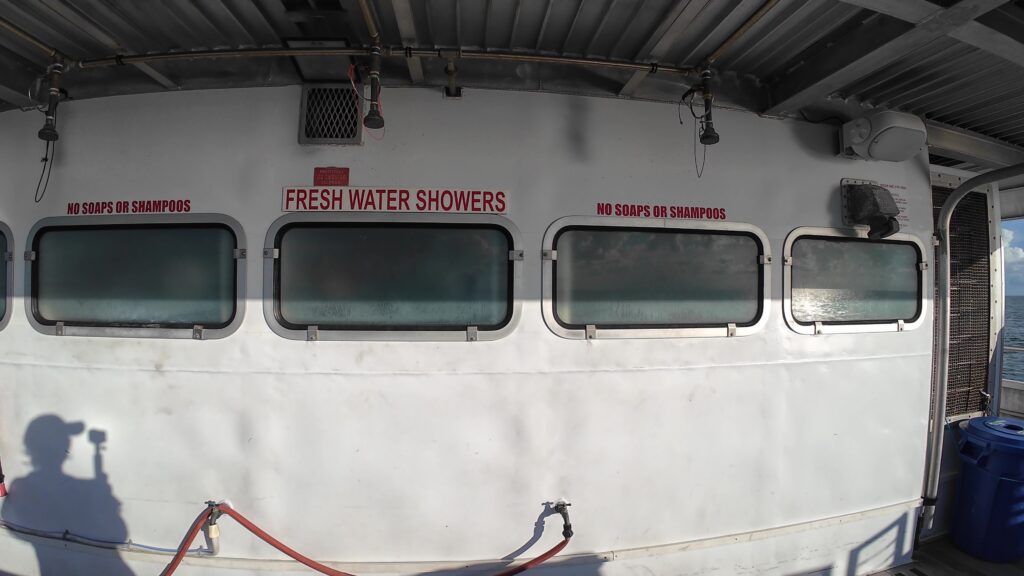
Other Information
Yankee Freedom Gift/Snack Shop
The Yankee Freedom Gift/Snack Shop serves a large assortment of sodas, snacks, candy, beer, wine, tropical drinks, T-shirts, cameras, Dramamine ™, etc. You may use cash or credit cards for purchases.
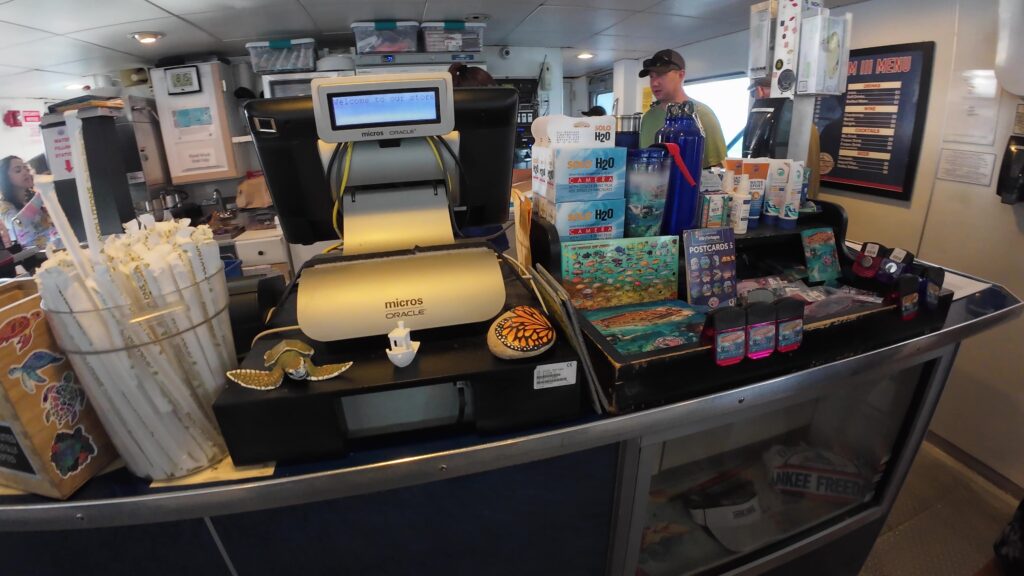
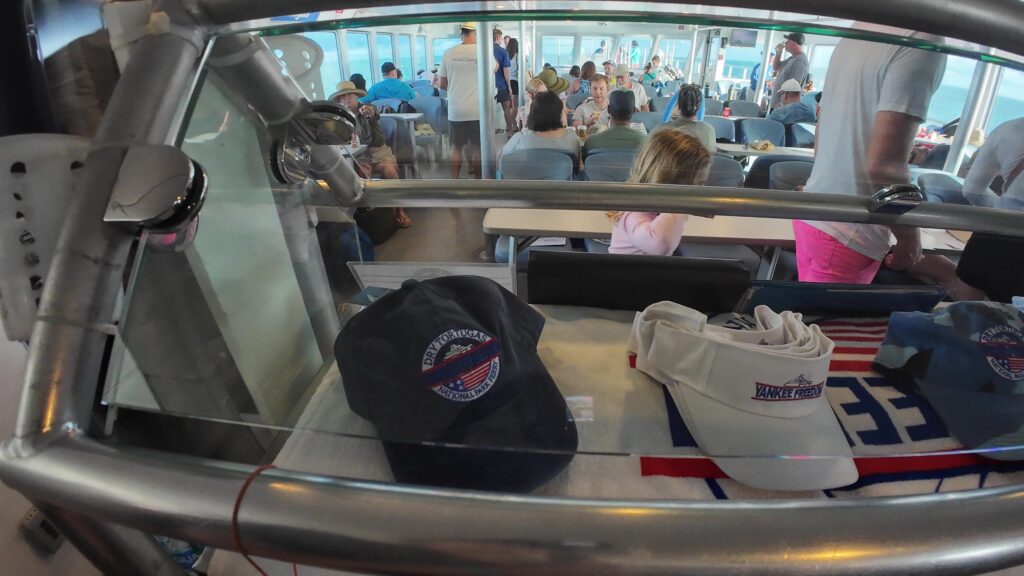
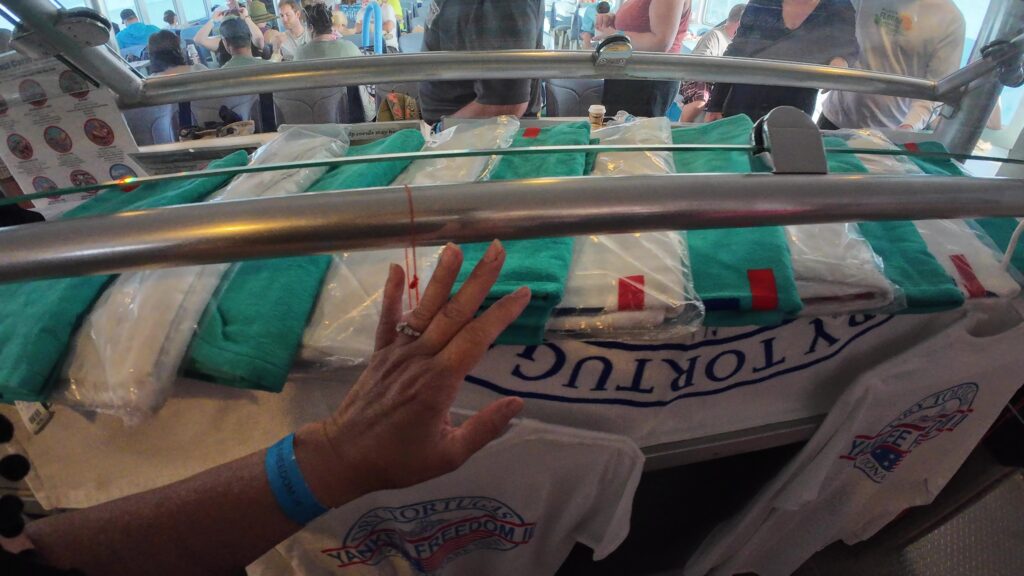
Fort Jefferson Visitor Center/Gift Shop
Fort Jefferson did have a small gift shop and visitor center. They had passport stamps for the National Parks Passport, books, postcards, t-shirts, long-sleeve swimming shirts, and other merchandise, along with some exhibits inside.
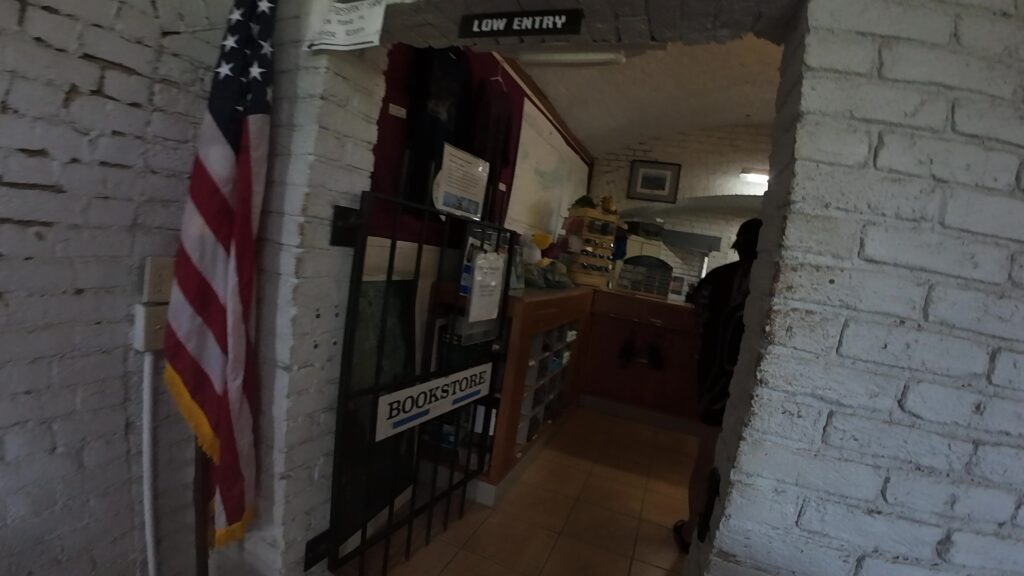
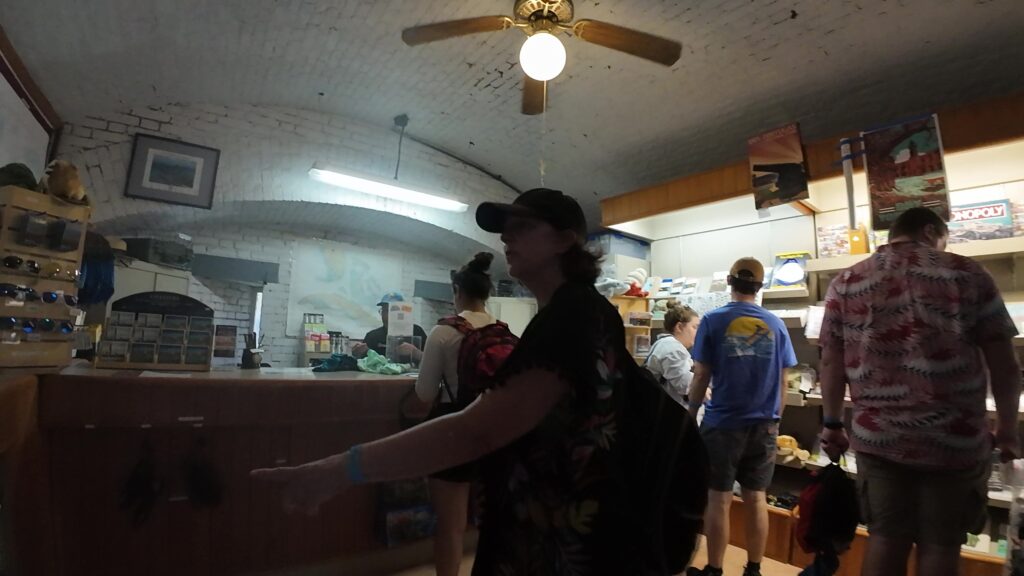
National Park Service
The Dry Tortugas National Park is part of the National Park Service. Park Rangers are available as in any National Park.
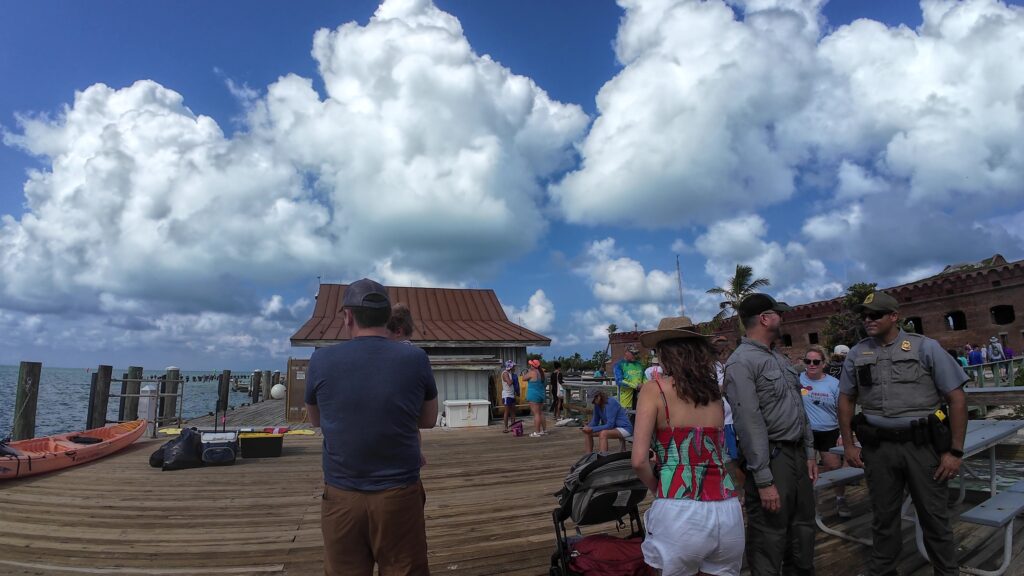
Camping/Tents
Visitors can stay overnight in tents in a designated section of the park. A primitive campground is located on Garden Key and is a short walk from the public dock. You cannot get reservations for the 6-person sites.
Bird Watchers
The Dry Tortugas is like a pit stop for birds flying between South America and the United States. It’s like a rest area on the highway for them! You can see all kinds of cool birds here, like hummingbirds, falcons, cuckoos, terns, and vireos. There are over 300 different types of birds that you can see here. Spring is the best time to visit if you want to see lots of birds, but you can see cool stuff here any time of year. It’s a great spot for birdwatching in the Florida Keys!
How to Get to Dry Tortugas National Park?
There are a number of options to get to the park. The first, and the one we took, was onboard the Yankee Freedom Ferry Boat. This was a great experience as the ferry had air-conditioning and comfortable seats on both levels. Other options include taking a seaplane from the Key West Seaplane Adventures company or a charter boat which was quite a bit more expensive. You can also bring your own private boat, but will need to purchase boat permits from the National Park Service.
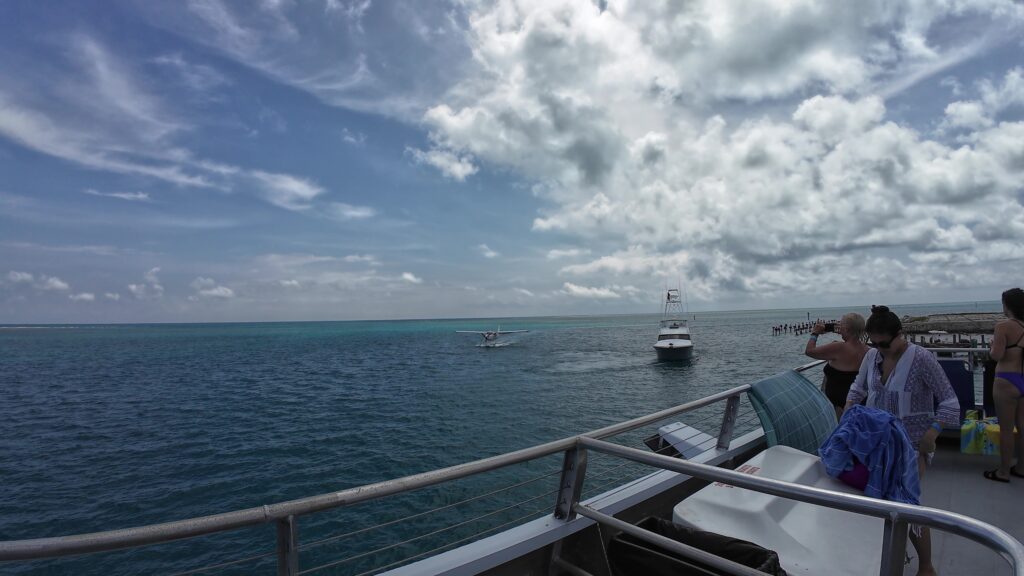
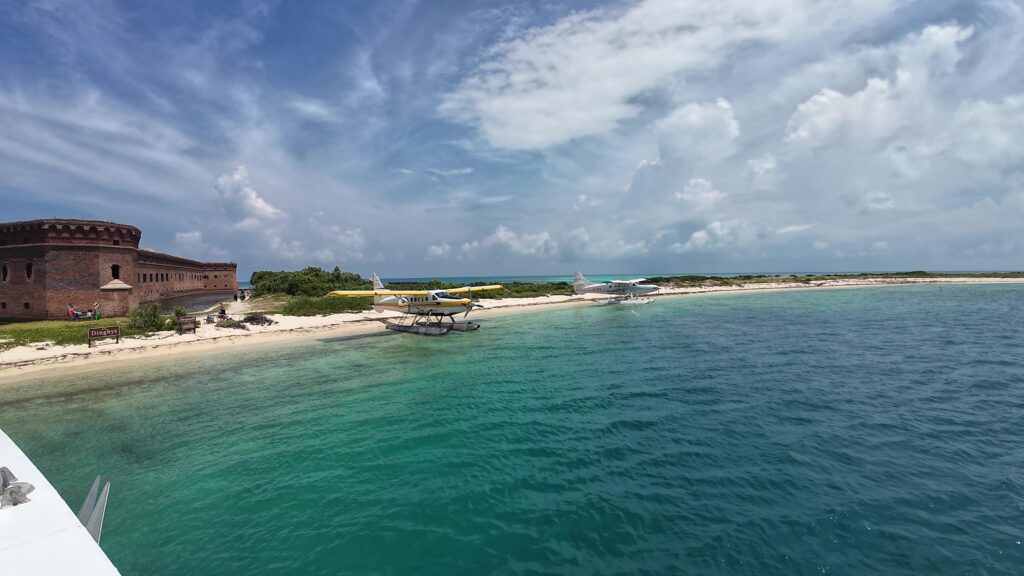
Where is the Dry Tortugas National Park located?
The Dry Tortugas National Park is approximately 70 miles west of Key West and about 111 miles north of Havana, Cuba.
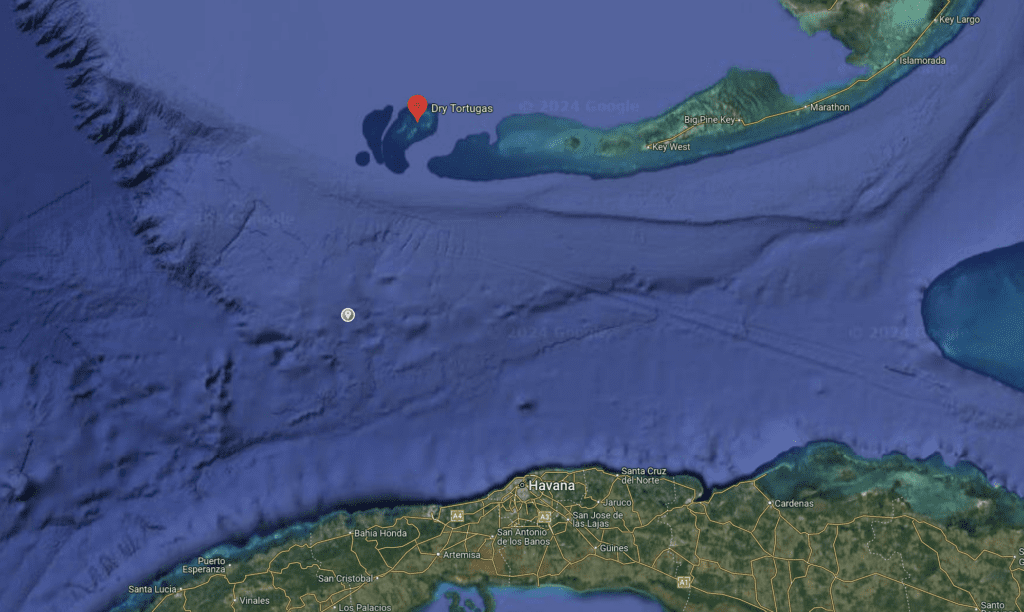
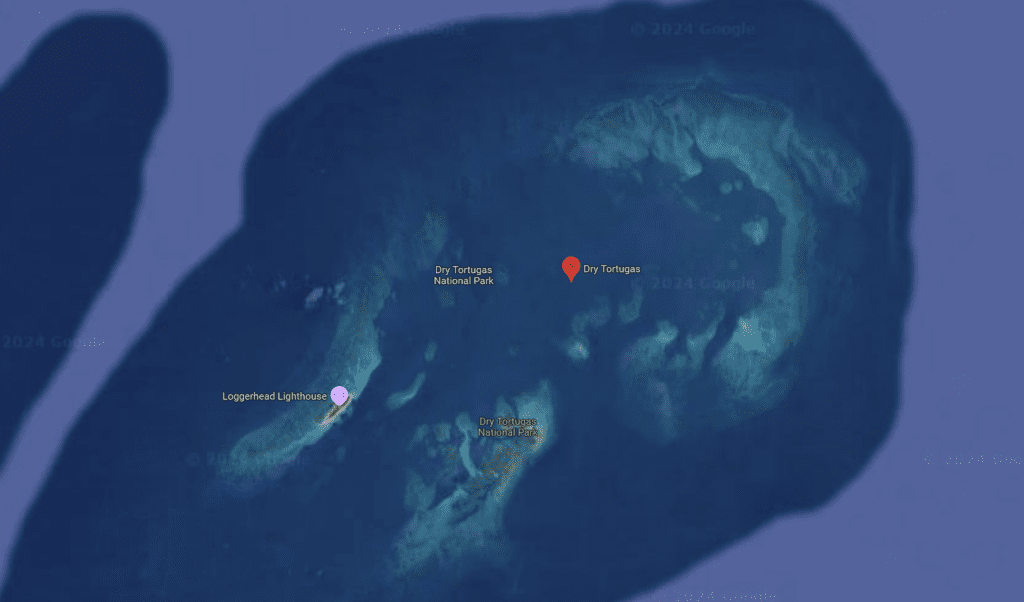
Reflections on Our Experience
Our day at the remote Dry Tortugas National Park was truly exceptional. You may consider the excursion a bit pricey ($220 per person) but the experiences we gained—historical insights, stunning views, natural beauty, and thrilling snorkeling—made it well worth the investment.
Throughout our trip to Key West and the Florida Keys, we found ourselves immersed in a variety of activities, from exploring the unique culture of the island to venturing into the Florida Everglades. With it’s rich history, the Dry Tortuga National Park excursion stands out as a highlight of our travels, and we encourage others to experience it as well.
Conclusion
As we wrap up our Key West adventure, we invite you to follow our journey. We had the best time and its an unforgettable experience!
For more travel insights, check out our many videos covering many destinations such as the Texas Hill Country, Las Vegas (off the strip) Valley of Fire, Arizona’s Upper Antelope Canyon, New Orleans’s Steamboat Natchez Riverboat and Vegas to Grand Canyon West Rim, and many more. Remember that National Parks are for sure a good time. If you’ve visited Dry Tortuga National Park, we would love to hear about your experiences in the comments below.
Thank you for joining us, and we look forward to sharing more travel stories with you soon!

Leave a Reply